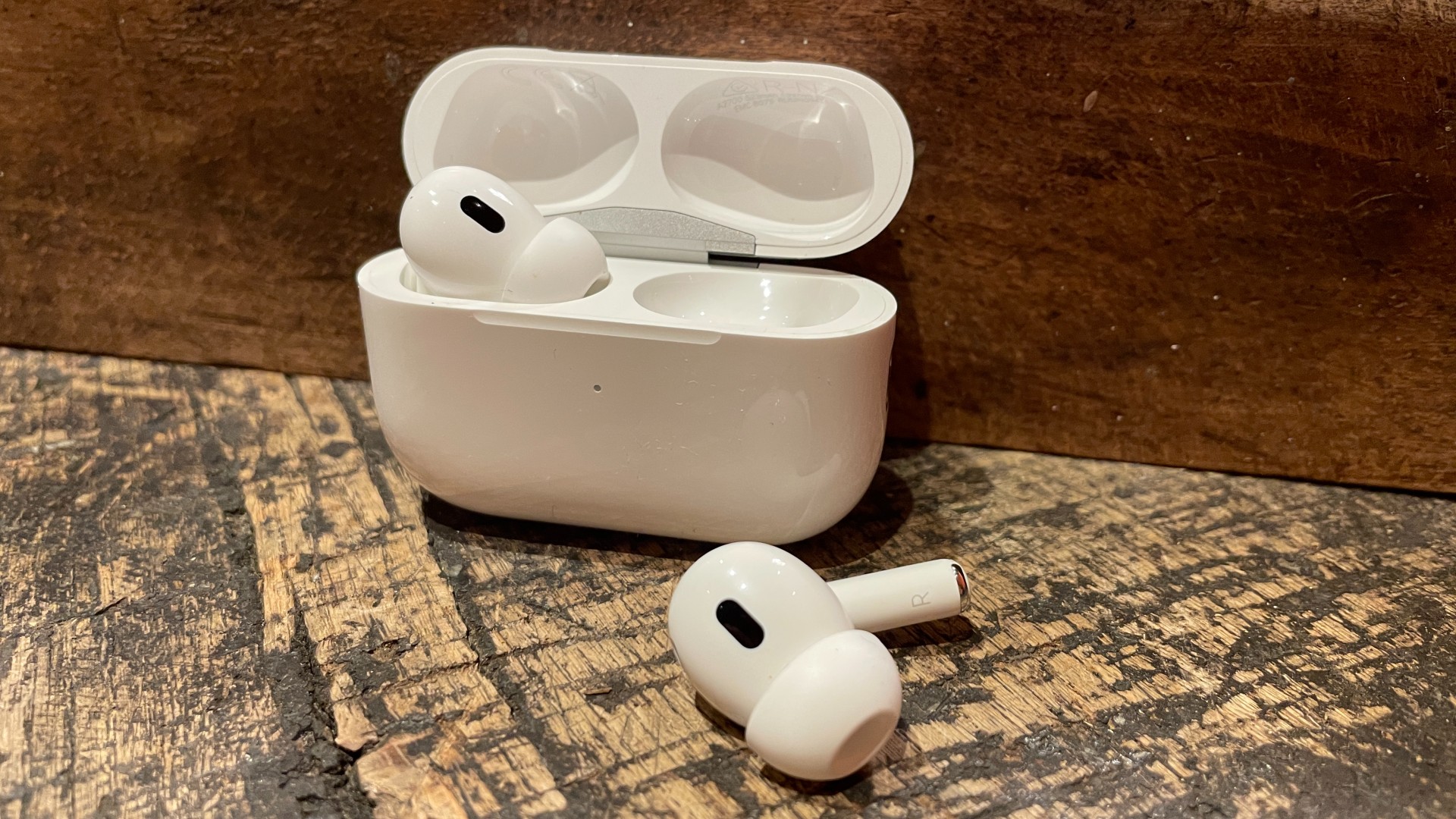Best wireless speakers 2025: tried and tested by our expert team
Set your songs free with a wireless speaker
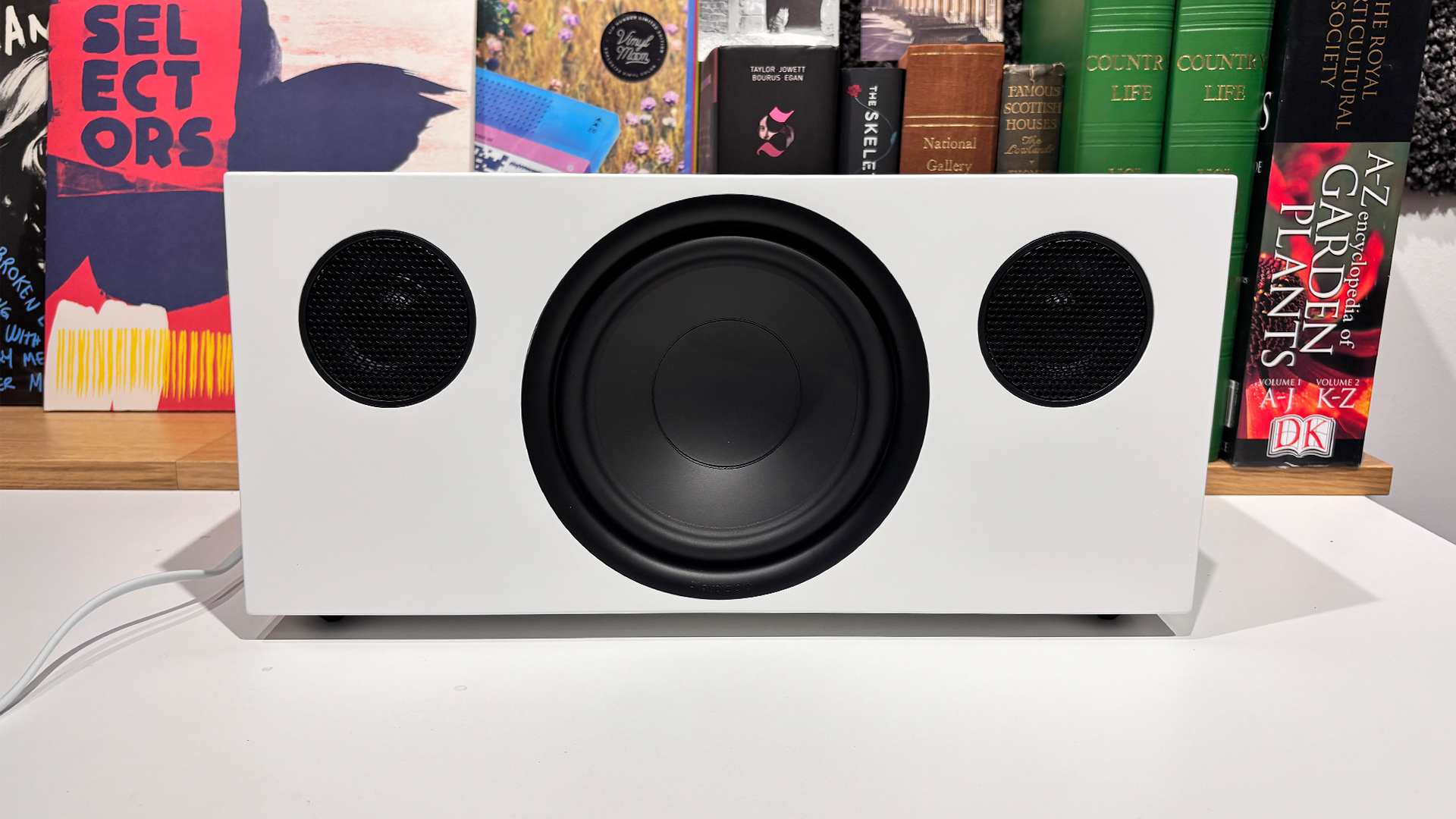
Choosing a wireless speaker can be tough. There are so many options covering almost every use case, budget and preference, from inexpensive portable units to high-end options costing hundreds, or even thousands, of pounds.
Wireless speakers can take different forms, too, from versatile, do-it-all boxes to separate wi-fi-enabled speakers such as the KEF LSX II system
None of that is made simpler when you consider that so many mediocre options aren't worth the cash. That's why we've tested all of this list's models to ensure we only recommend the finest wireless speakers with multiple streaming features and the best performance. If you're looking for portable or solely Bluetooth alternatives, try our list of the best Bluetooth speakers instead.
The past few years have been huge for wireless speakers – many are included in our Award-winning stable, and we're hoping for similar quality to arrive in 2025. Sonos and Apple continue to hold strong, but with strong competition from the likes of Audio Pro and KEF, you're spoiled for choice.
Discover more about our testing process or scroll down to see our pick of the best wireless speakers.
- For purely portable models, try our list of the best Bluetooth speakers
8th October: The new Audio Pro C20 W has replaced the outgoing C20 as our best mid-price entry.

I'm a senior staff writer who has listened to and reviewed dozens of products during my time at What Hi-Fi?. Wireless speakers are becoming serious big business, offering a raft of streaming smarts and features alongside what feels like ever-improving sound quality. My time with the vast majority of the units below, at home and in our test rooms, has put me in the perfect position to help you figure out exactly which one to pick. There are plenty of factors to consider – from how much space you have to which features you prioritise, and whether you're an Apple user – but our picks below are varied and extensive enough to put you on the right path.
Best wireless speaker overall
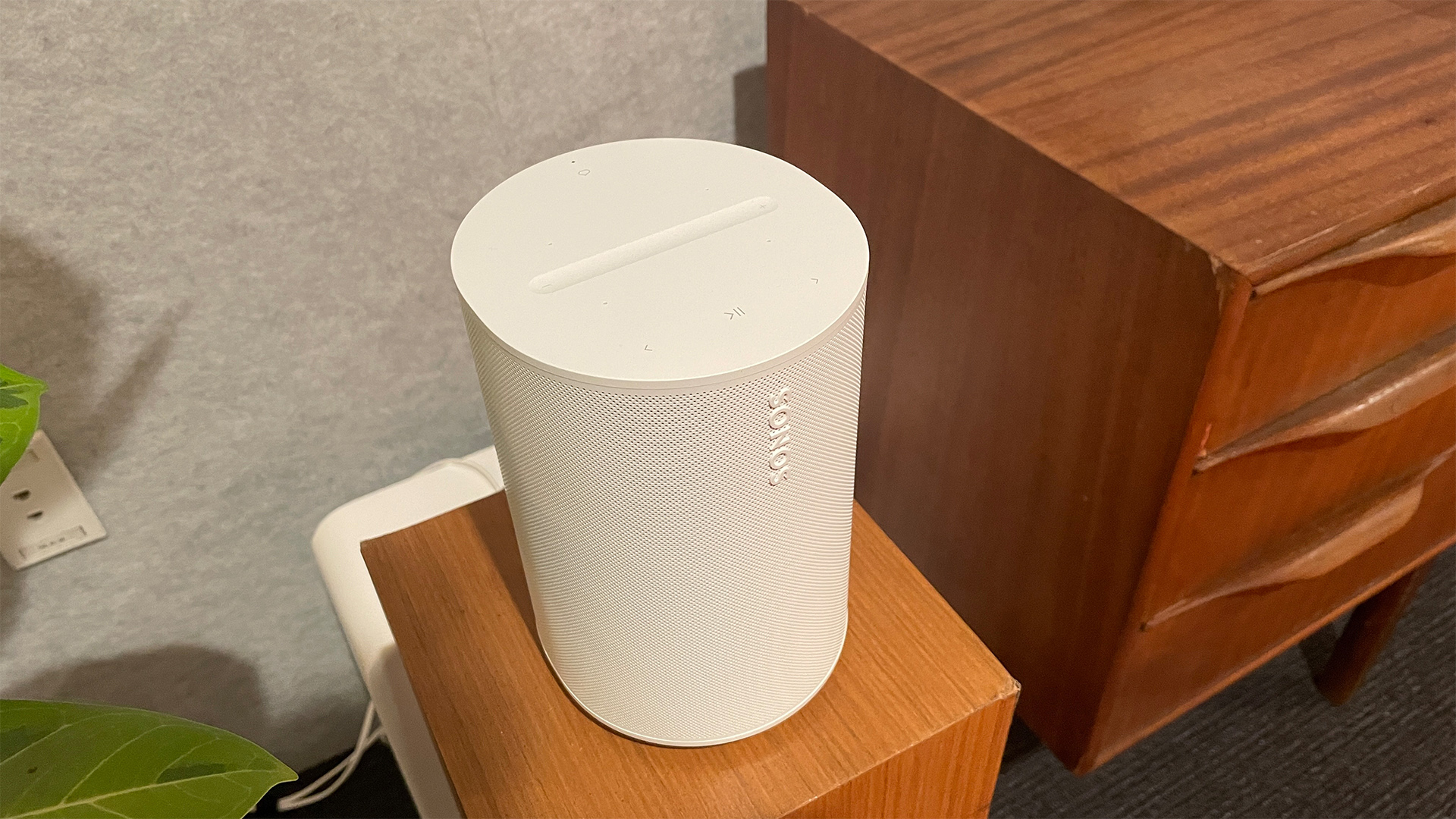
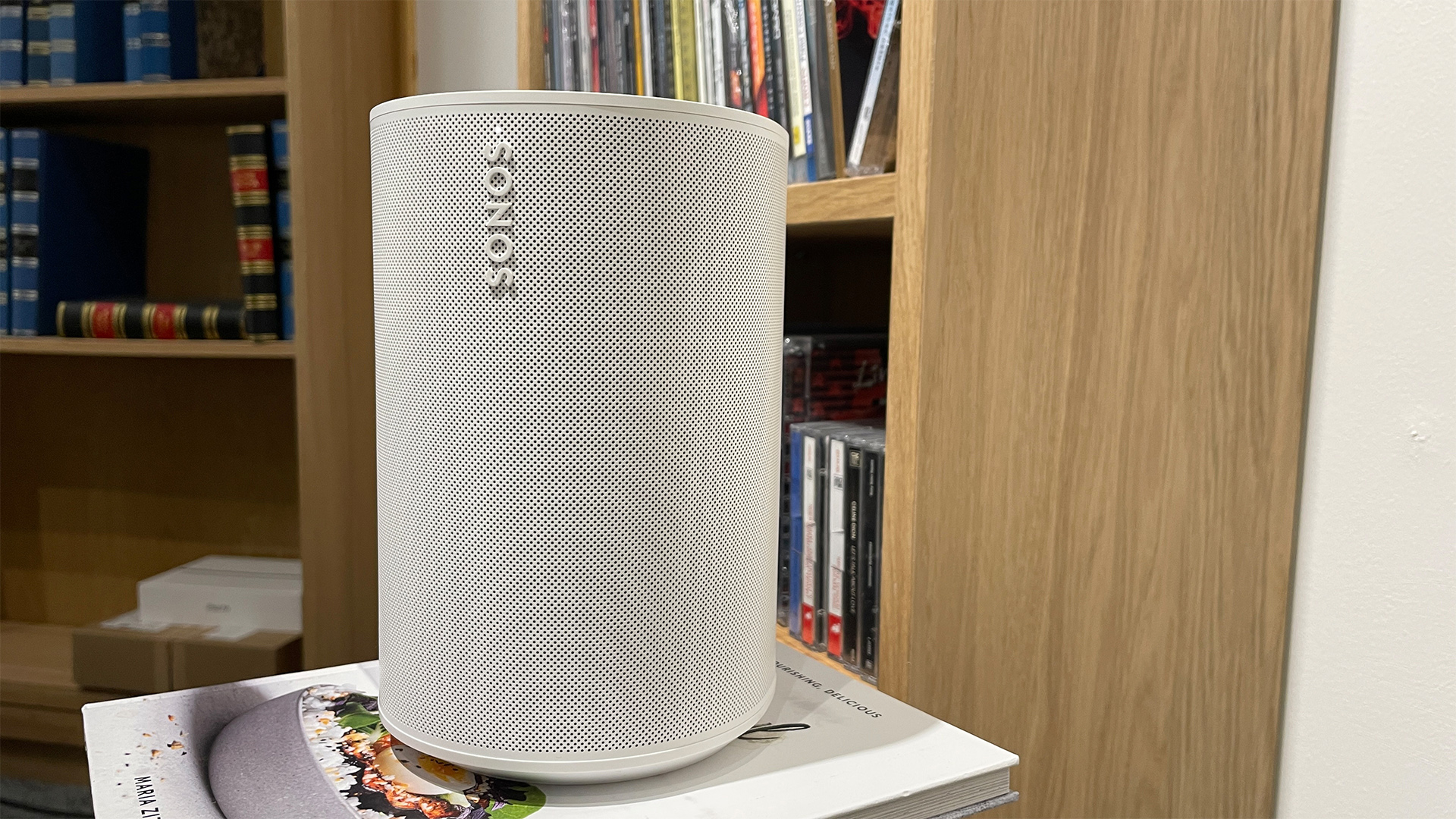
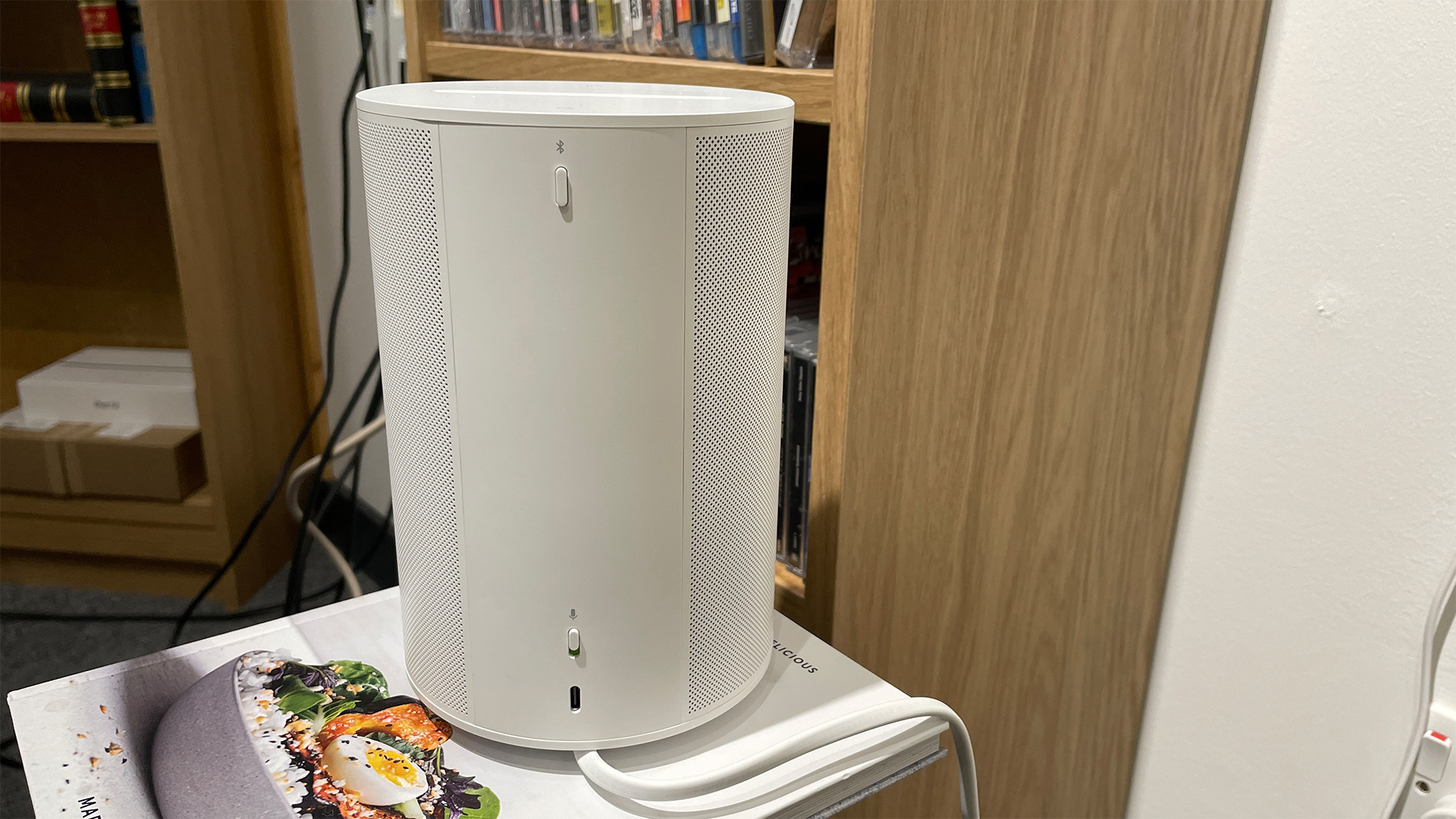
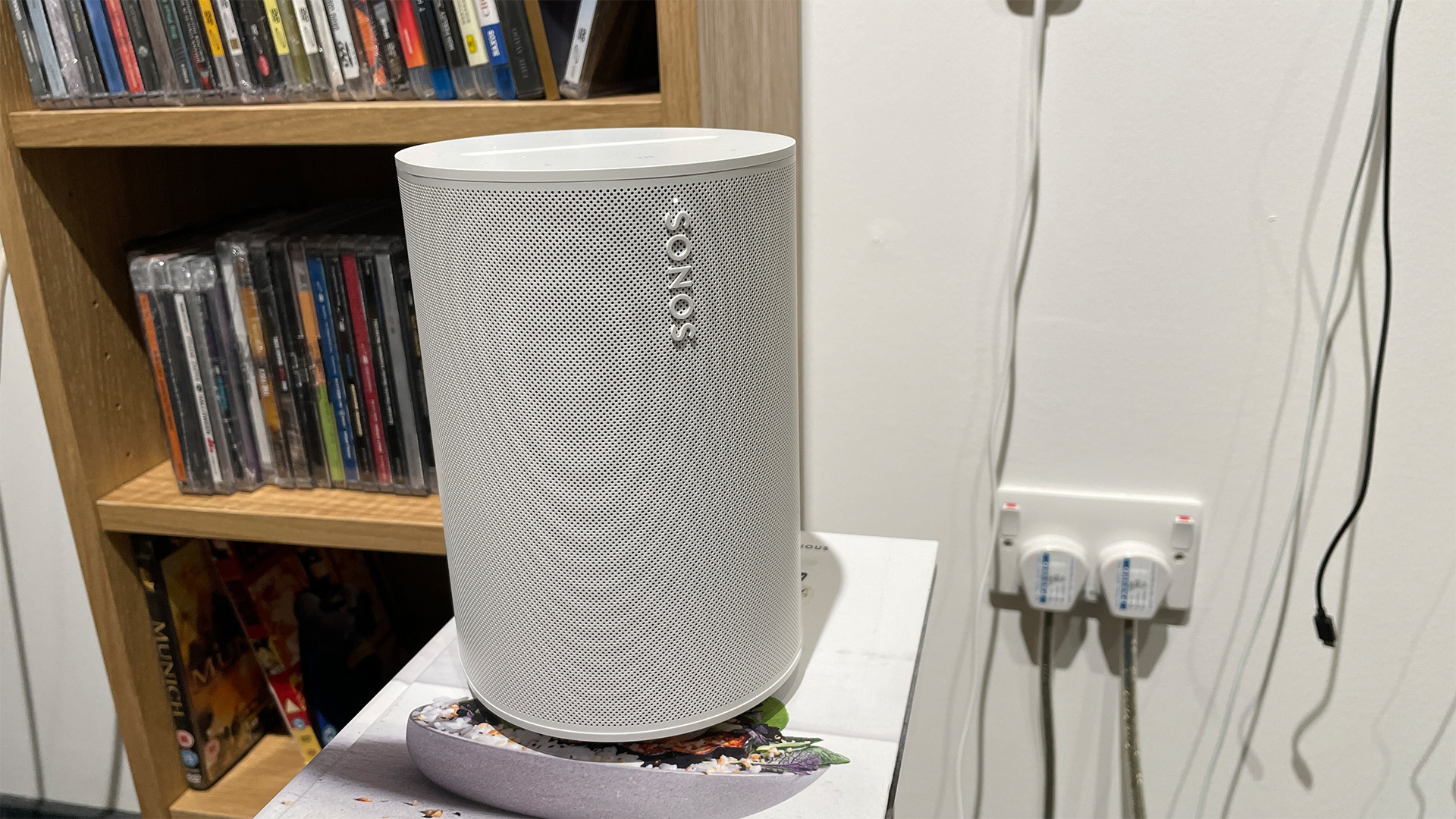
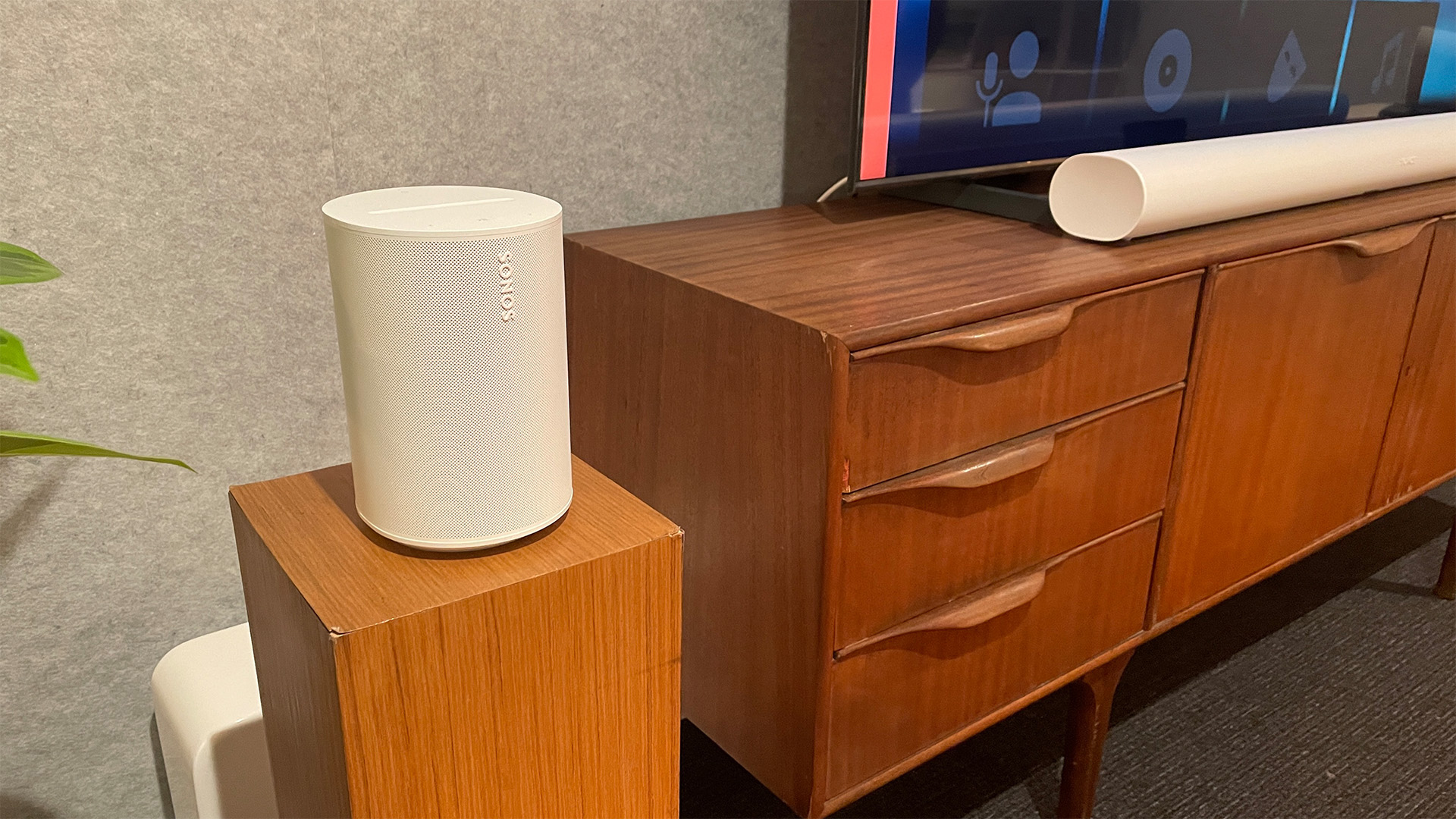
Specifications
Reasons to buy
Reasons to avoid
As the name suggests, Sonos’ range of wireless speakers promises a new ‘era’ for the American audio company, and boy has it delivered on that front. Released alongside the Era 300 (see below), the Era 100 is the perfect complement to its larger, costlier sibling, delivering a host of streaming playback features and excellent sound in a neat, easy-to-use outfit.
The substantial £449/ $449/ AU$749 asking price for the Era 300 can be offputting, so the Era 100 is a five-star choice for anyone seeking to access the premium side of what Sonos is doing in this particular arena.
Like its heftier counterpart, the 100 delivers an open sound, a lovely sense of rhythmic drive and all the detail and precision you could hope for at this price.
The Sonos app is simple to use, the number of streaming features is vast, and everything is as well-made and reliable as you’d expect from a brand heading into 2025 with real momentum (some hiccups along the way notwithstanding).
Again, Sonos rarely delivers what you’d call ‘budget’ options in the best wireless speakers category, and we’re not that happy about spending extra cash for a wired connection, but if you’re still looking to fork out a decent amount without making as much of a dent in your funds as the 300, the Era 100 is the wireless speaker for you.
As our review summarised: "those already part of the Sonos ecosystem will find the new Era 100 speaker difficult to resist, while those new to Sonos will find it a charming entry to a capable and feature-rich wireless speaker experience".
Read our full Sonos Era 100 review
Best budget wireless speaker
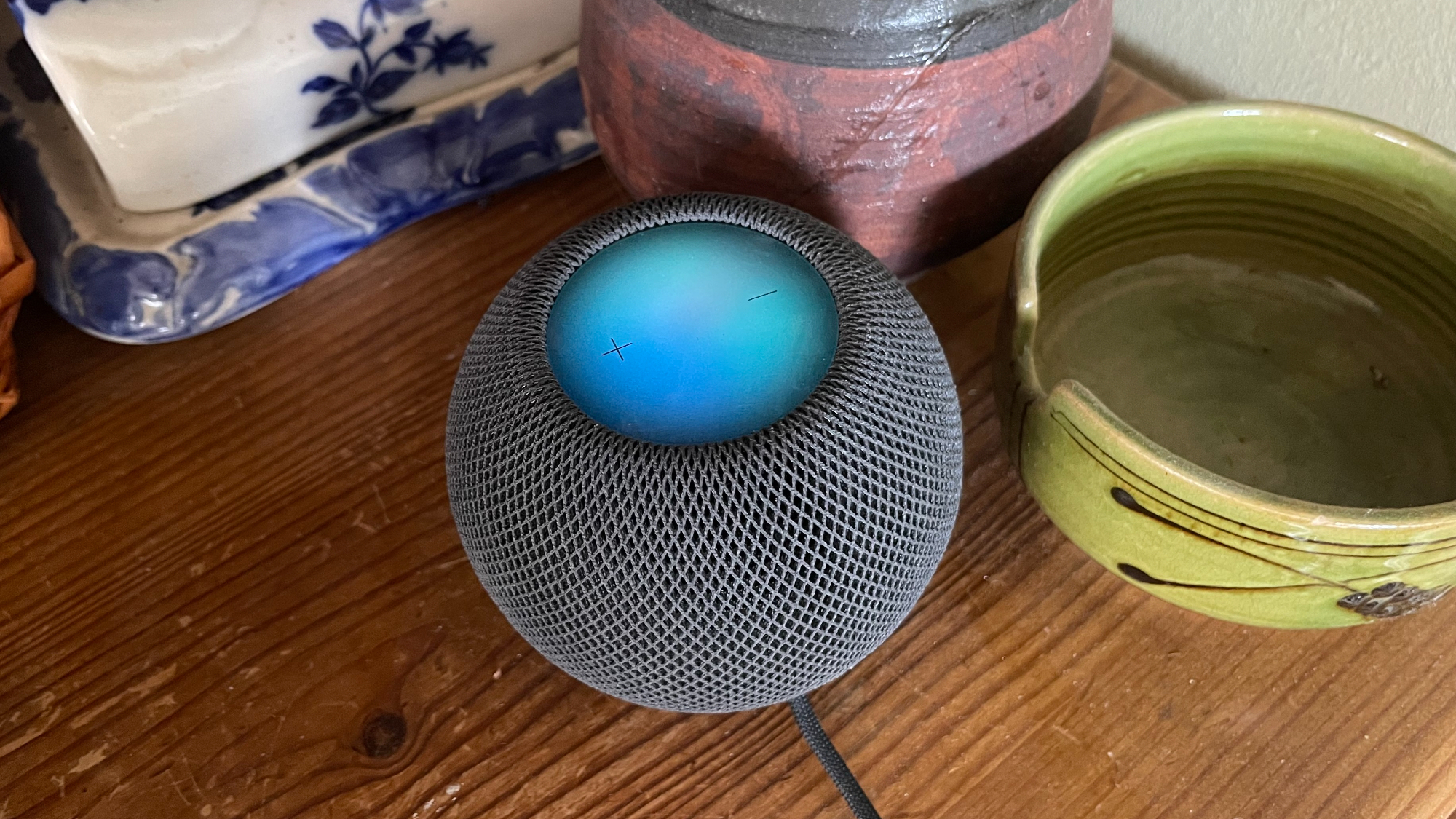
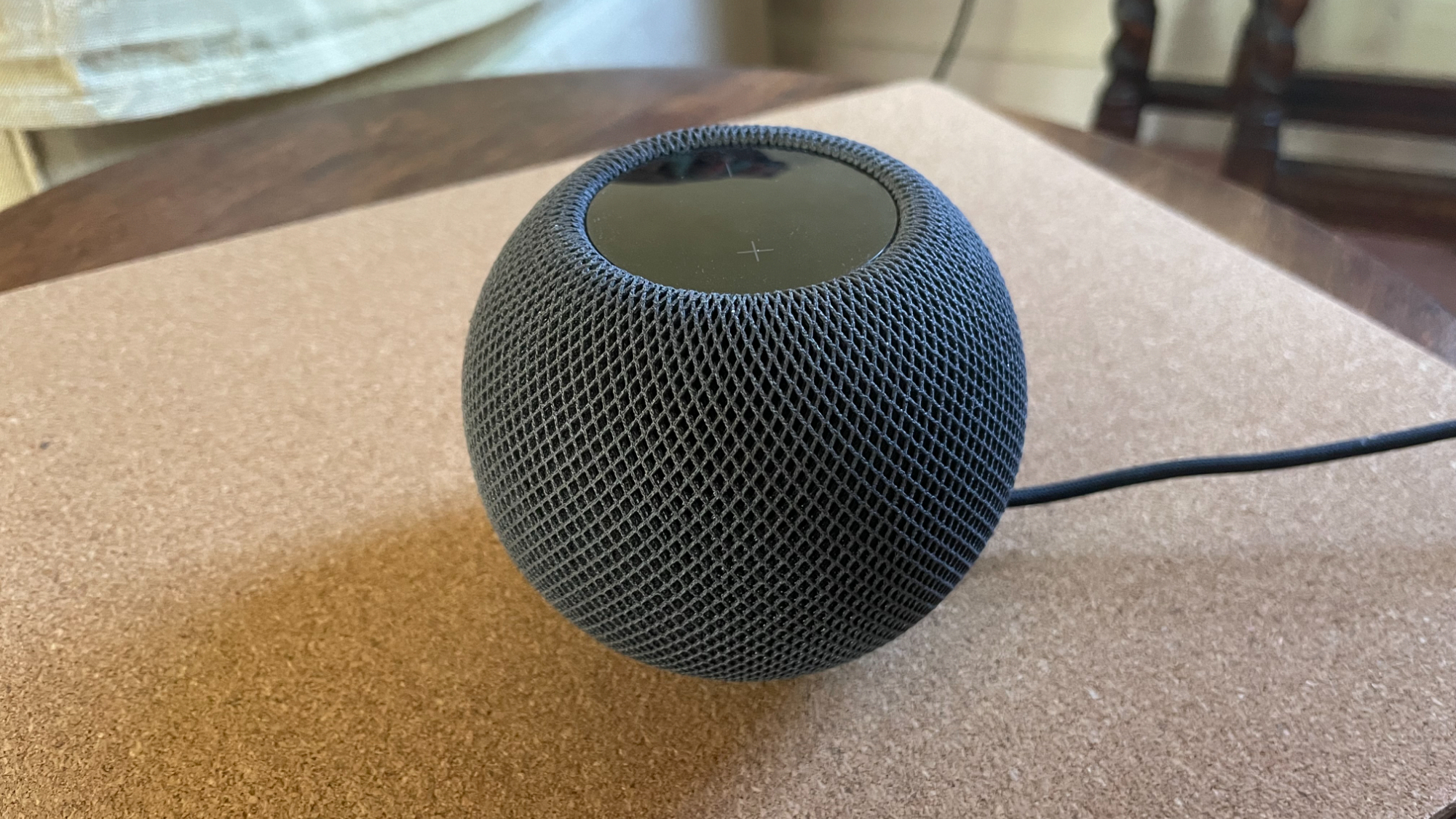
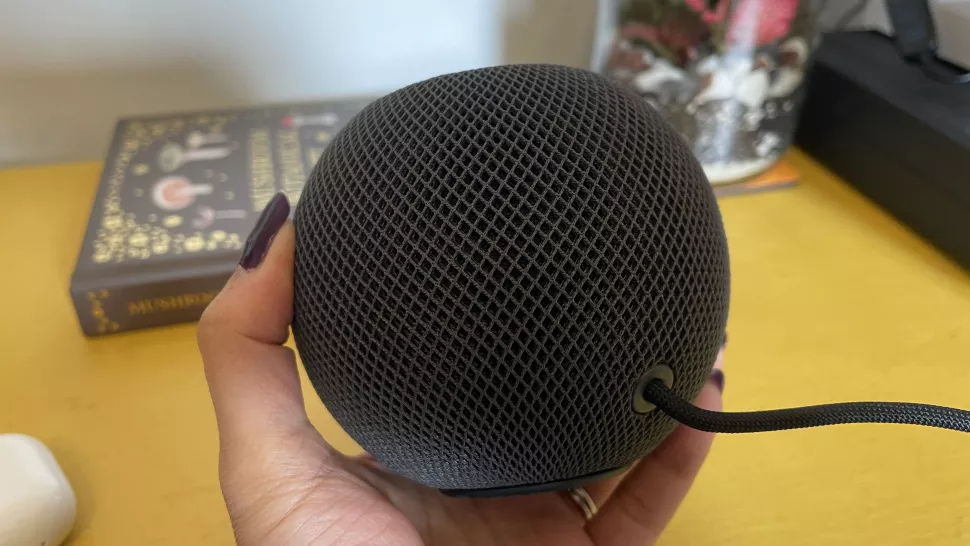
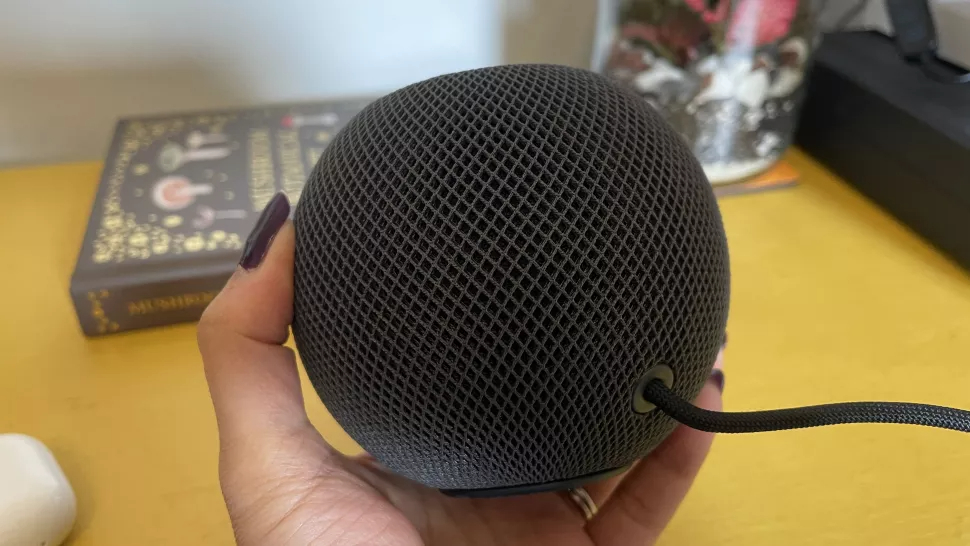
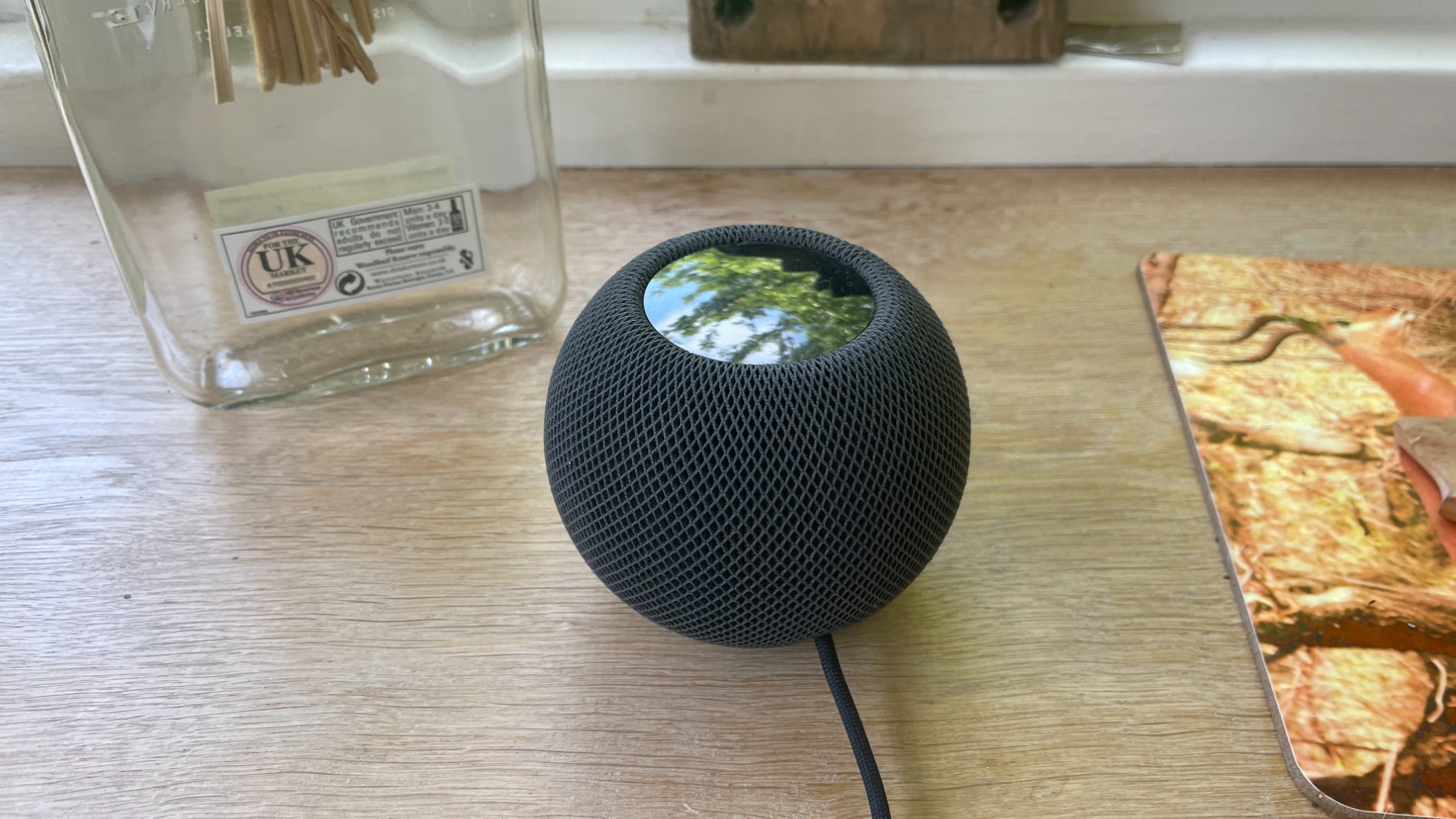
Specifications
Reasons to buy
Reasons to avoid
Are we going to get a new HomePod at some point during 2025? We thought we would, as all rumours seemed to suggest a HomePod Mini 2 was about to show up, but it seems as though we'll have to postpone the champagne and red carpet until next year.
For now, the current Mini is the way to go for Apple fans. A smart, bijou little model that stands just 8.4cm tall, it’s quite a bit smaller than the similarly spherical Amazon Echo - in fact, it’s even dwarfed by the fifth-gen Echo Dot. Get its swirling orb of coloured light up and running (when Siri is listening or processing) though, and you realise what a refined, classy performer you've got on your hands.
The sound quality is excellent for the size, but it goes loud, meaning the Mini can fill a whole room (within reason) with solid, well-formed audio. From the moment we start playing music, it’s clear that the HomePod Mini comfortably outperforms its size and price, adding sophistication and maturity to its decent number of decibels.
Not at all bad for a price that falls just under the £100 / $100 / AU$150 mark.
Siri is your voice assistant, and after a short period of learning it'll respond to the phrase “Hey Siri, play something I'll like” not by streaming your most played track of the last few weeks, but by playing something that you probably haven't heard before but which has been curated to fit in with your current listening habits and tastes.
It’s a really powerful way to discover new music, and one of our favourite things about the diminutive HomePod.
A four-time What Hi-Fi? Award-winner that just keeps on impressing. Want to go bigger? Check out the Award-winning HomePod 2.
Read our full Apple HomePod Mini review
Best wireless speaker for spatial audio
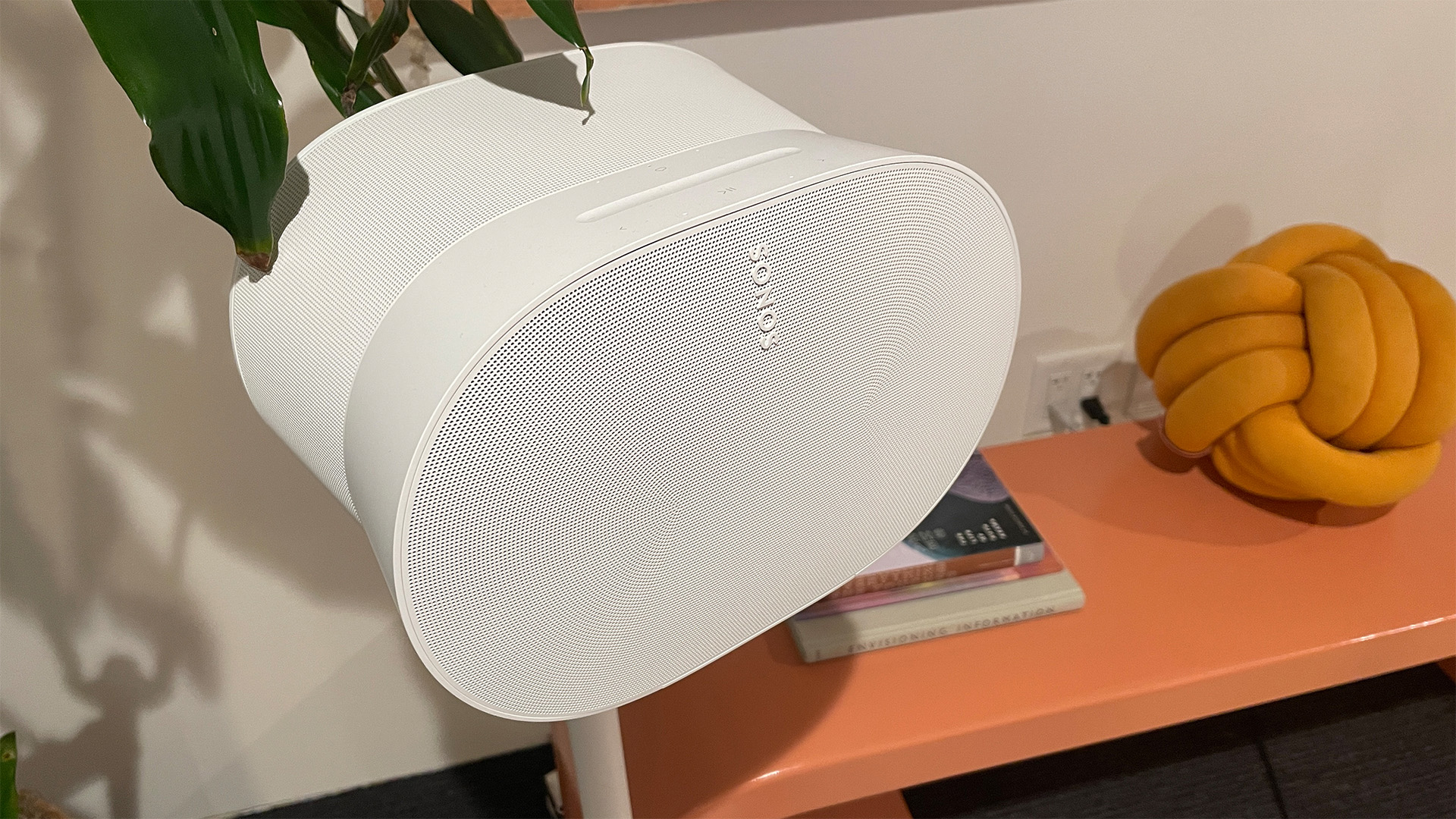
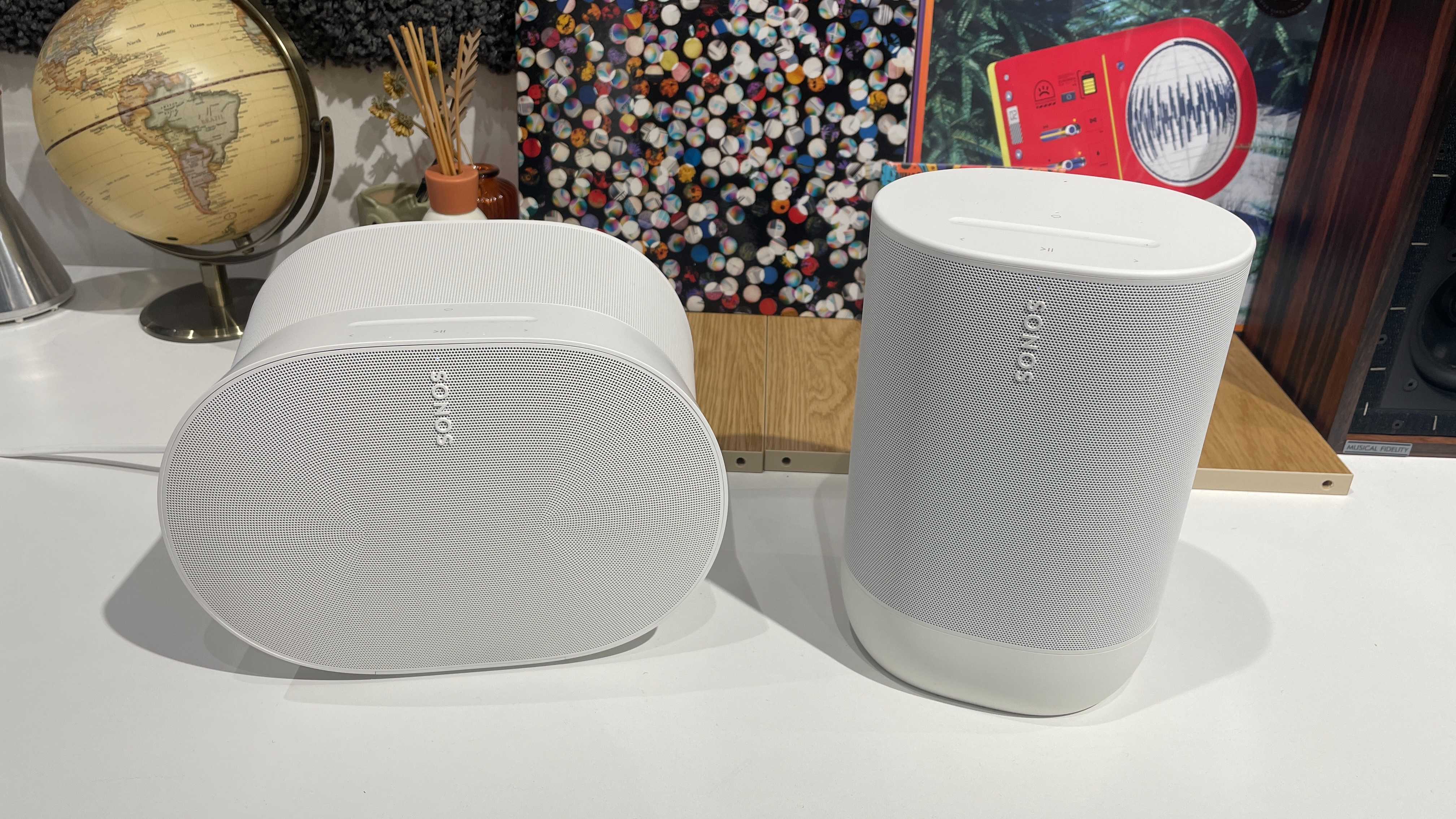
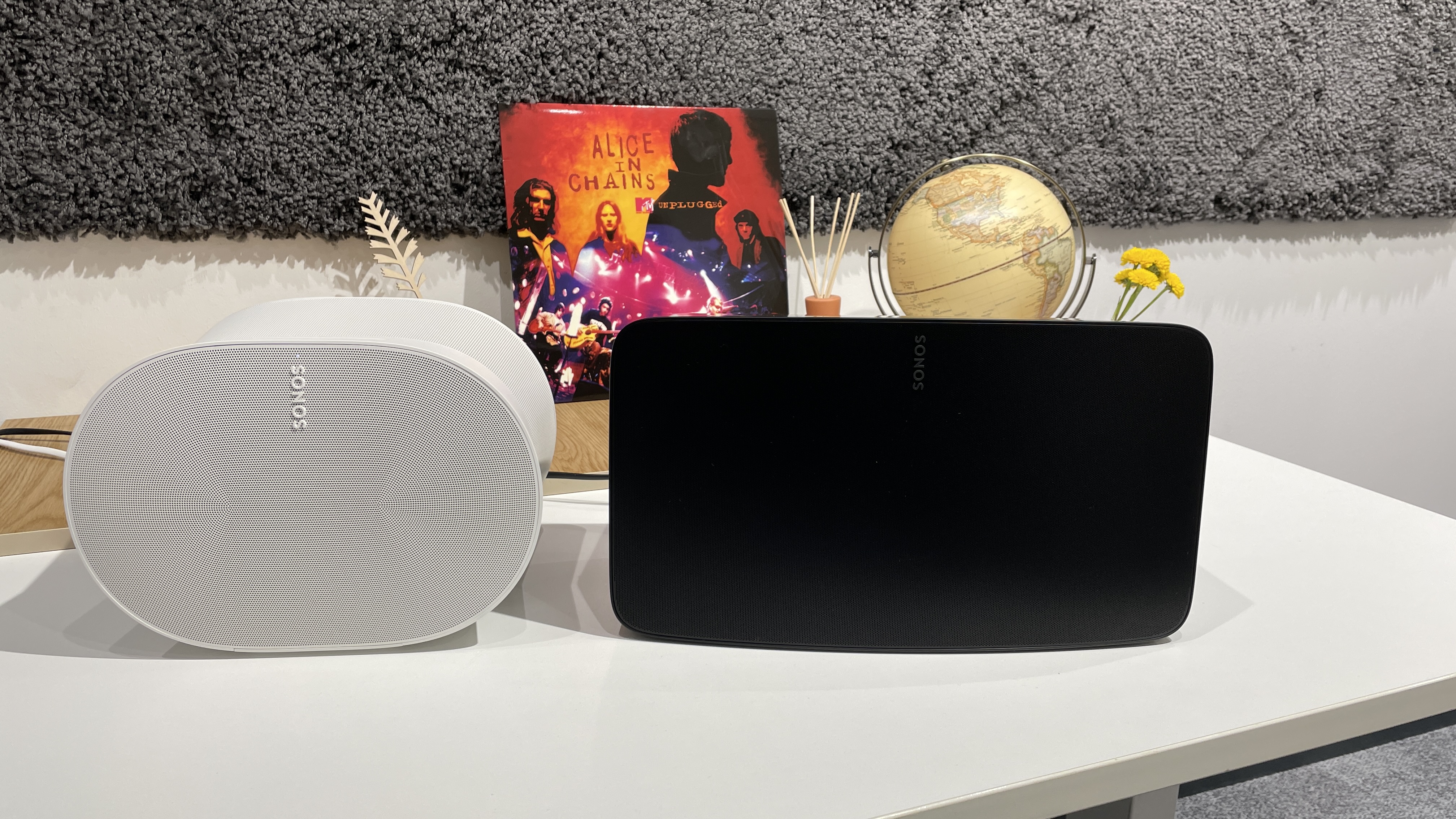
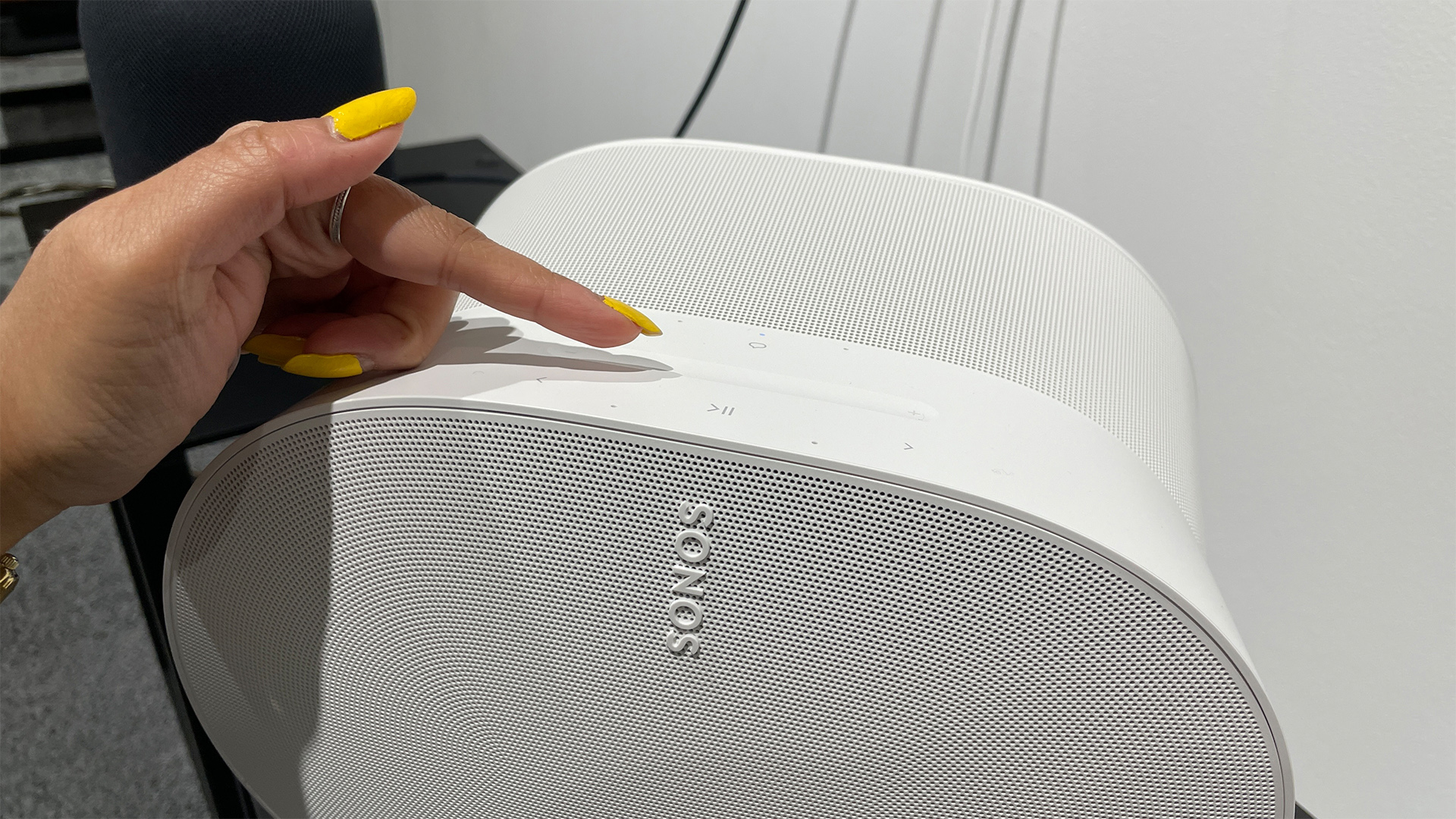
Specifications
Reasons to buy
Reasons to avoid
If you liked the sound of the Era 100 and have the money to spend on something bigger, bolder and frankly better, you've landed at the right place.
It isn't enough for the best wireless speakers just to deliver great sound and a decent array of features anymore, and ever since Apple's HomePod 2 landed early last year with spatial audio packed in, rivals have been scrambling to integrate the immersive tech in the most satisfying ways possible.
Enter the Era 300, Sonos’ more expensive rival to the HomePod 2 that looks to beat Apple at the spacial audio game. Featuring that unique, “cinched hourglass” shape, the Era 300 is a more acquired taste than most of the brand’s rather more conservative designs, but in terms of performance, the five-star Era 300 is a bit of a masterpiece.
Throw whatever you like at the Era 300, chances are it has it covered, filling our testing rooms with spacious, cohesive sound without ever seeming to break a sweat.
Big choral numbers feel broad and immersive thanks to some of the best spatial audio performance we've heard, but the Era 300 excels seemingly with all genres and across every taste. Yes, having to pay 20 quid extra for a wired connector is a small outrage, but the Era 300 has earned the right to be a bit cheeky.
A truly exceptional performer, and one of the best wireless speakers we’ve tested at this price point that delivers on all fronts. To nab a line from our original review, the Era 300 provides "an enticing experience that's worth embarking on".
Read our full Sonos Era 300 review
Best mid-price wireless speaker
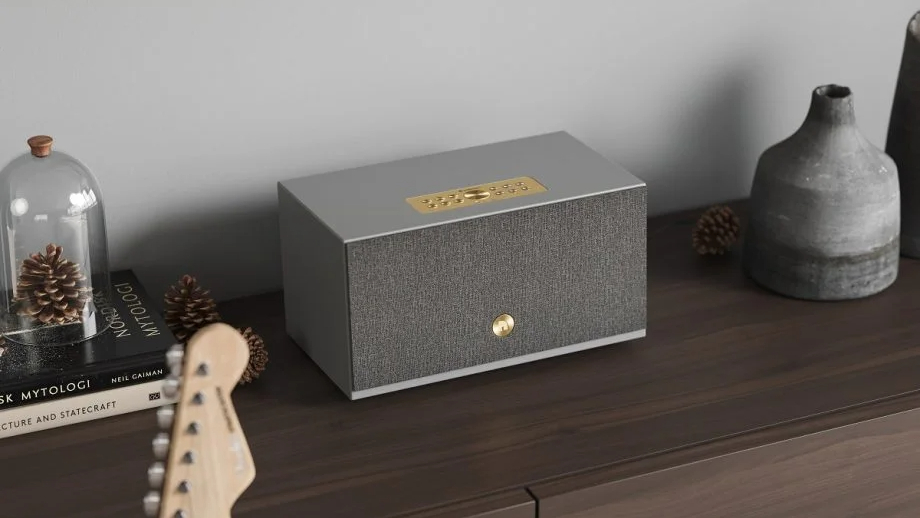
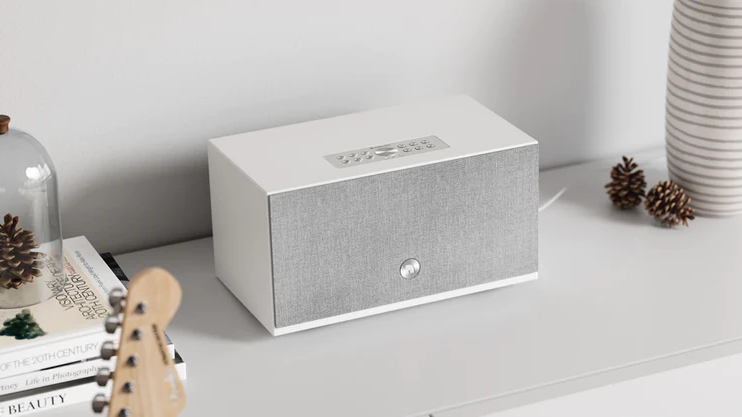
Specifications
Reasons to buy
Reasons to avoid
The 2021 update (sensibly titled MkII) to the multiple What Hi-Fi? Award-winning Audio Pro C10 added AirPlay 2 and Google Cast to complete a multi-room home run and gain another yet more What Hi-Fi? Awards for the best home wireless speaker in the £250-£500 mid-price range.
Now, around four years on, we're still recommending it as one of the best wireless models at its given price point.
When we tested its older sibling, we pitted it against models almost double its price and found it outperformed them easily, and that's still the case today when compared to many lesser rivals.
The C10 MkII has only been made more attractive thanks to hefty periodic discounts, although newer competition from the likes of the HomePod 2, Sonos Era 100 and Era 300 means you should check out each model to see who is offering what regarding discounts and deals.
What isn't up for debate is that the C10 MkII's three options for multi-room streaming (AirPlay 2, Google Chromecast and Audio Pro's own slick and functional app), plus grippy bass and improved hi-fidelity performance, make it a perennial favourite.
It may be getting on a bit now, but the old dog remains a fine option that could be a very smart choice now that its price is dropping and heavy discounts are creeping in.
On that note, do be Audio Pro is updating its entire line of wireless speakers, including the an updated MkII costing £350 / €400, with better sound and a new app. We're testing the W-series soon, meaning the 'W' edition could replace the standard speaker if its sound is up to scratch.
Read our full Audio Pro Addon C10 MkII review
Best Apple wireless speaker
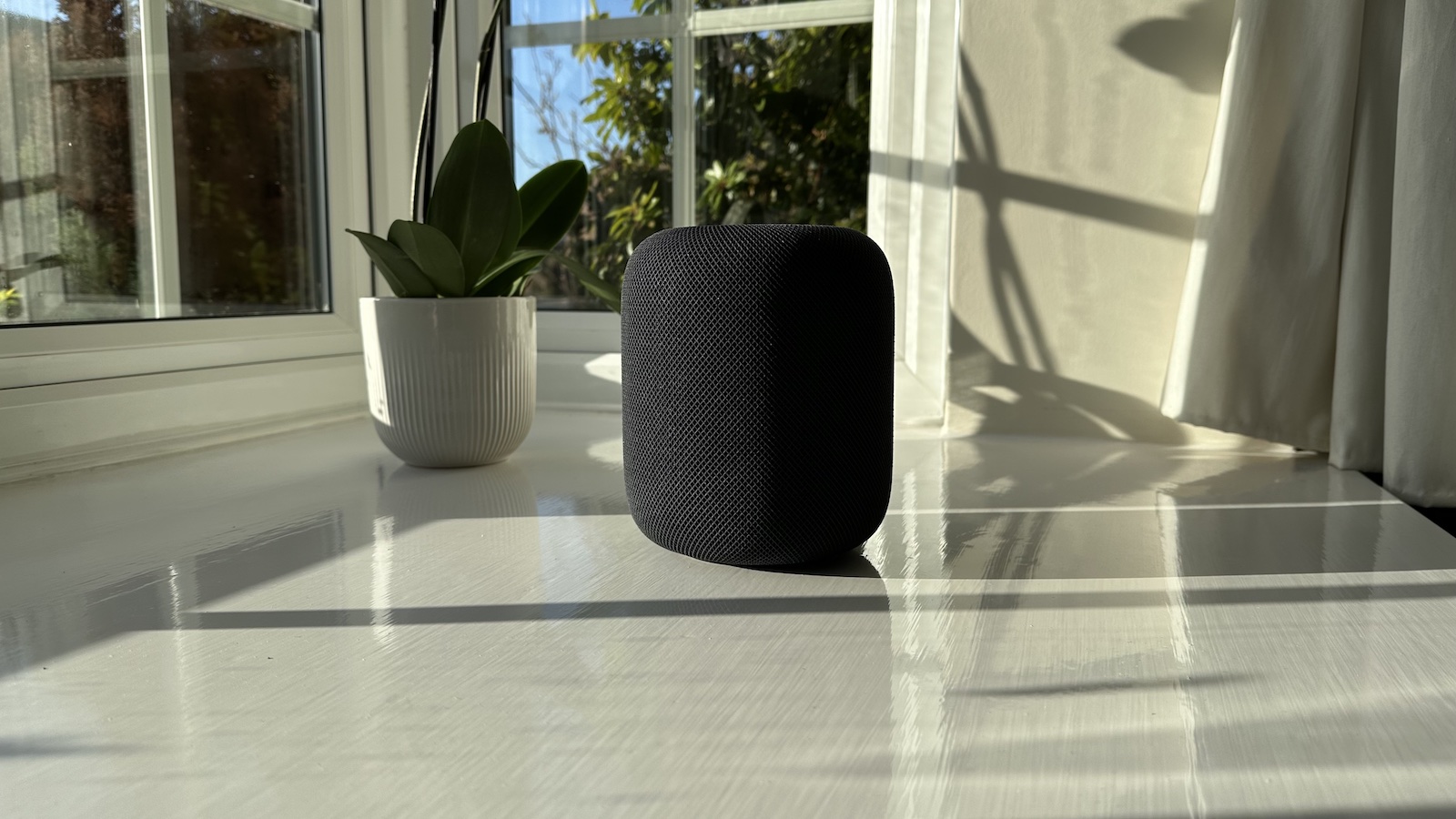
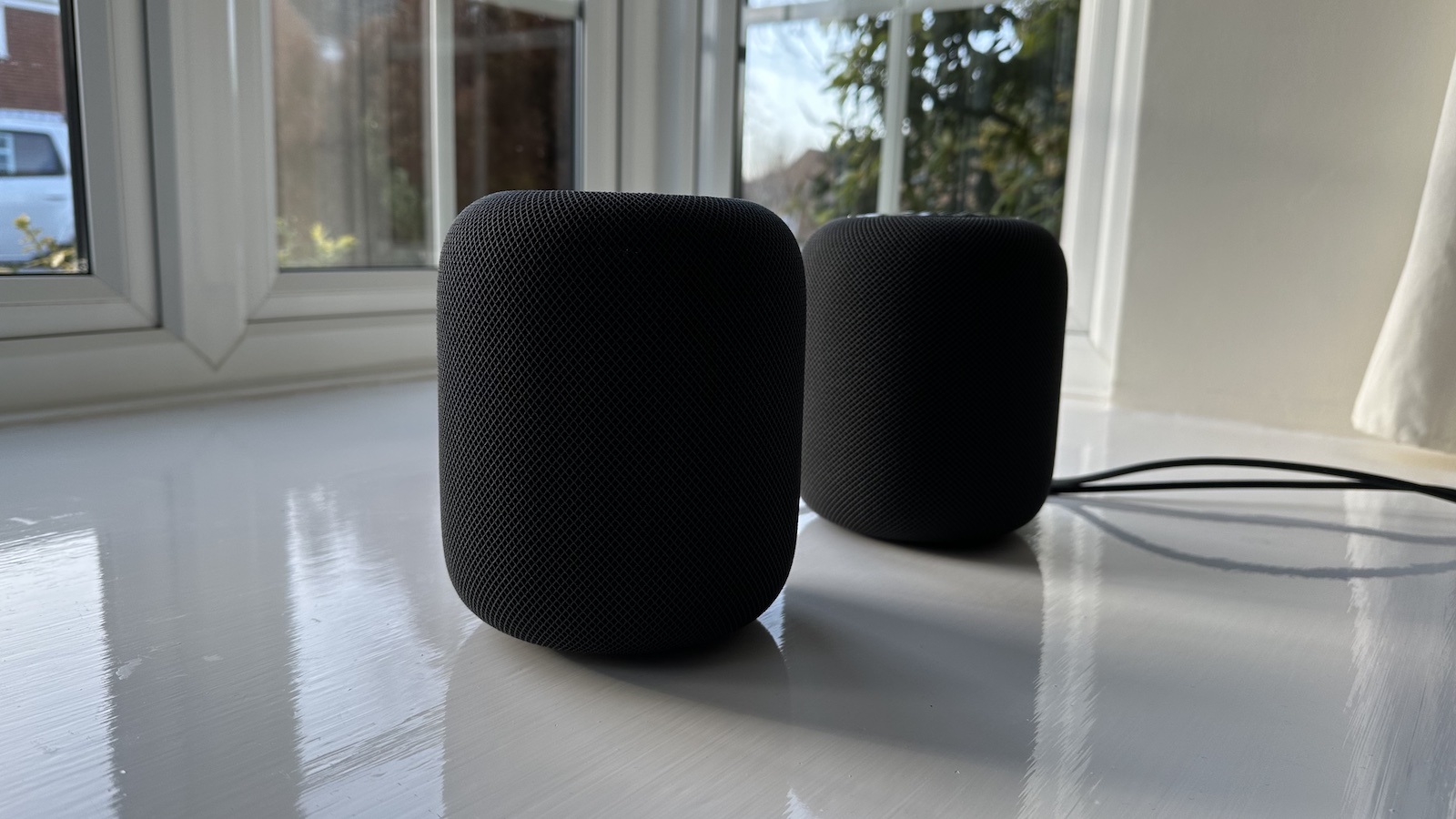
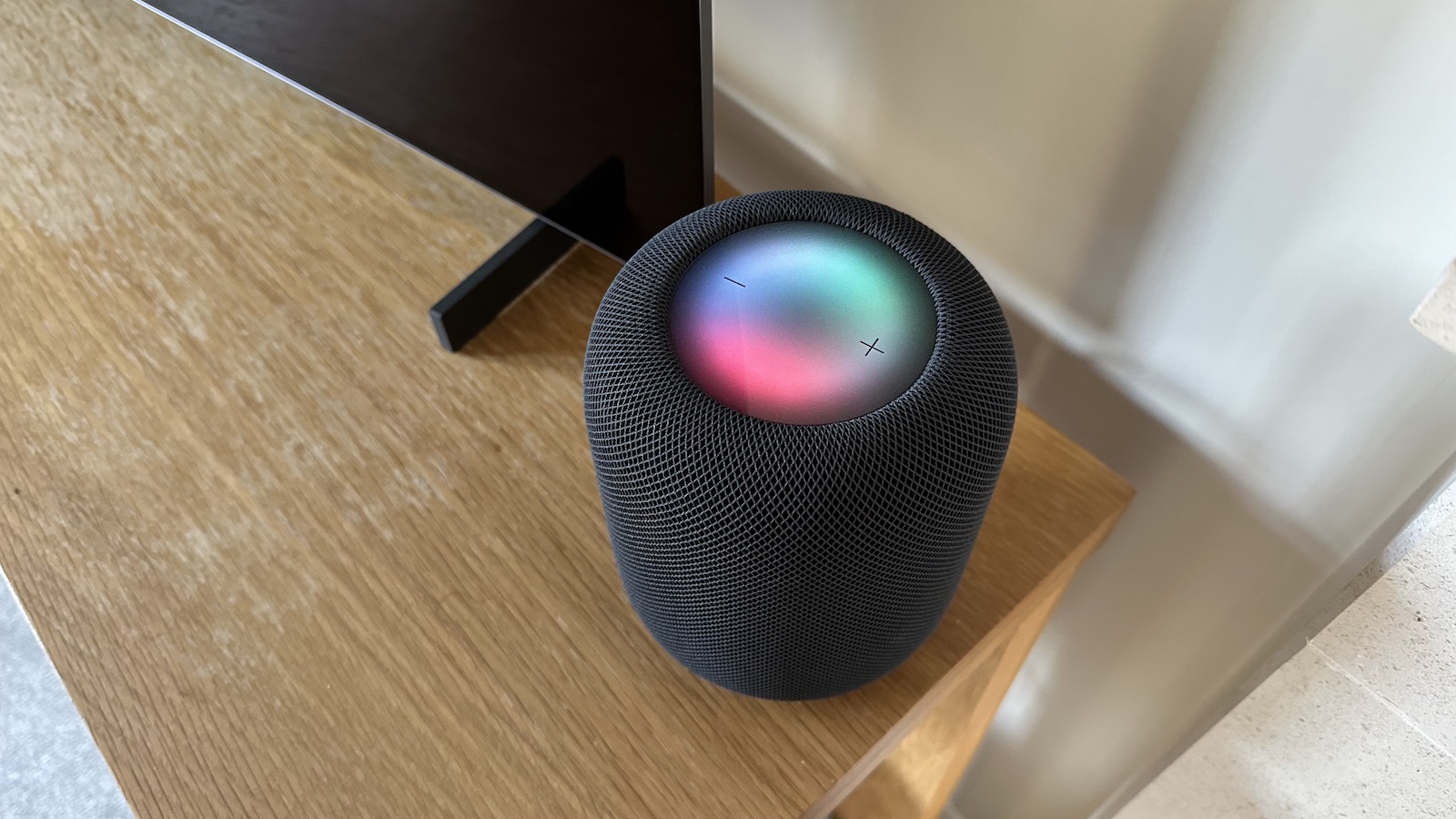
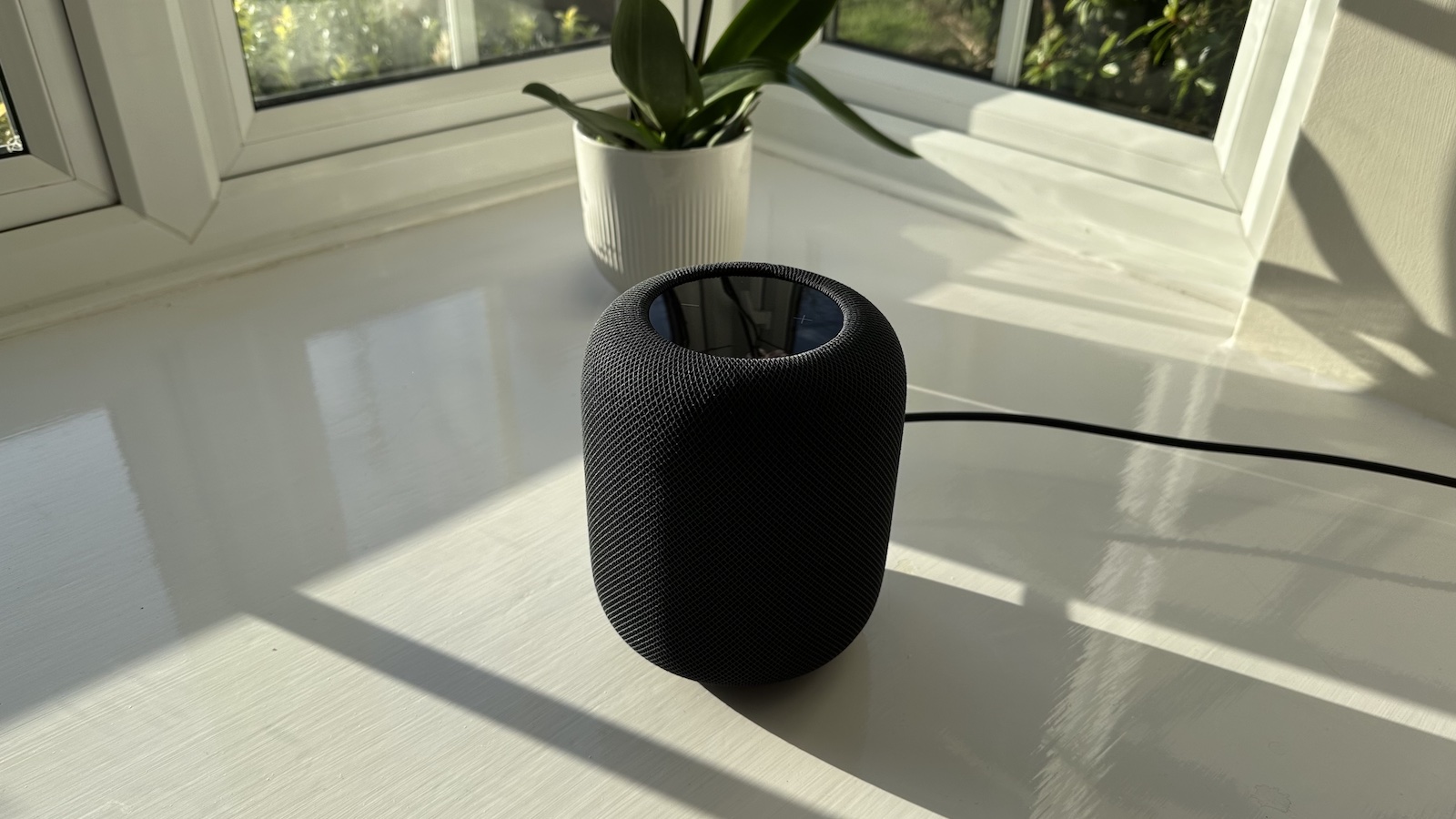
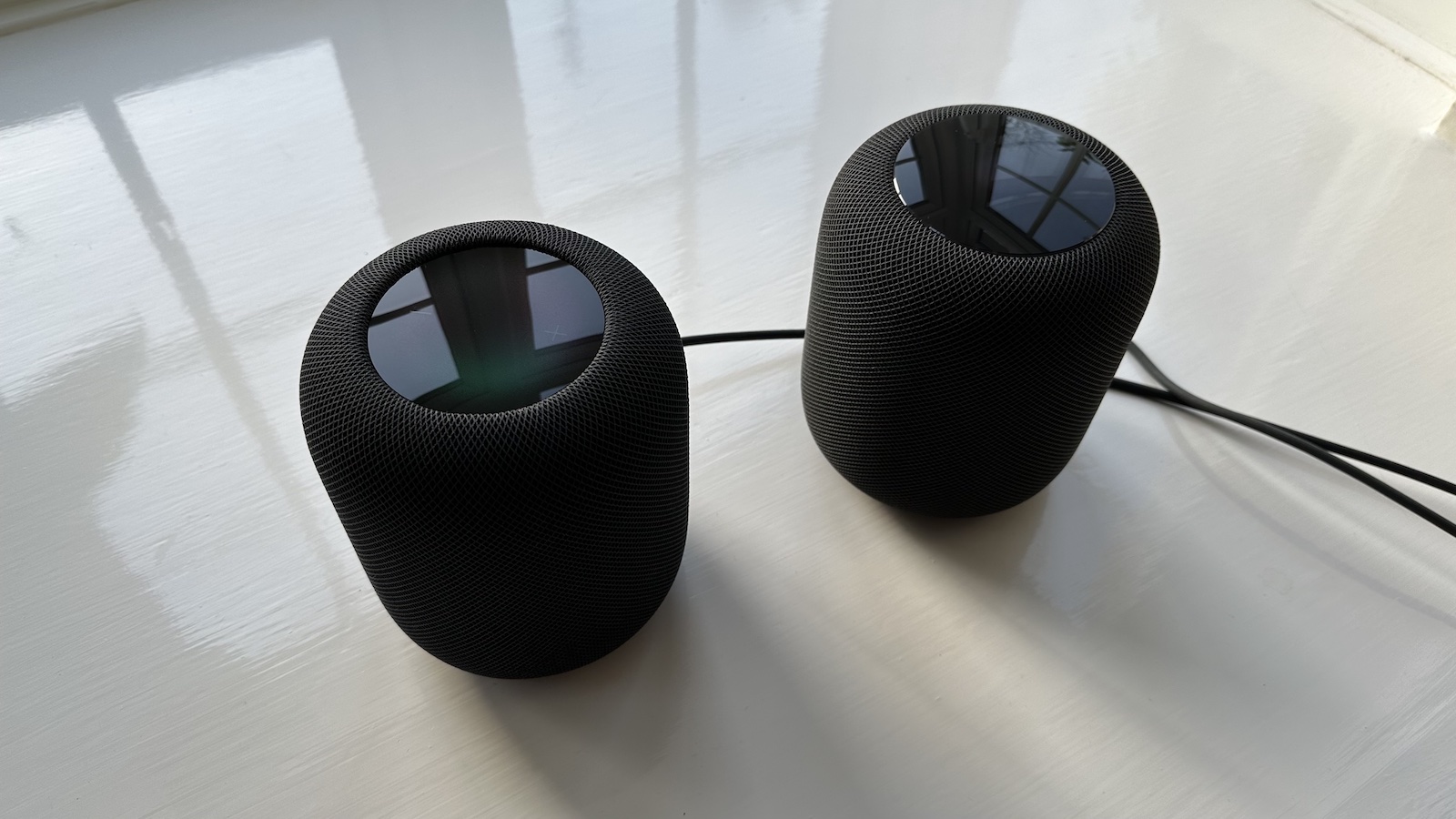
Specifications
Reasons to buy
Reasons to avoid
The HomePod 2 is the pricier option in Apple’s current lineup, sitting well above the smaller HomePod Mini featured above, something that's worth considering if your budget doesn't stretch to just under £300 / $299 / AU$479.
Though it looks a lot like its predecessor, it’s a completely different beast under the hood and a clear sonic step forward for Apple. Our tests revealed the HomePod 2 to be one of the best-sounding smart speakers in the game, with clear, warm vocals and a boundless, infectious enthusiasm which makes listening an exciting, engaging experience.
The deep integration with Apple’s ecosystem also makes setting up the second-gen HomePod a blissfully frictionless experience. Paired with an iPhone, all you have to do is scan for the speaker and run through a few on-screen commands to get it fully up and running and integrated with your smart home setup.
The entire procedure only took us a few minutes, and we can't imagine anyone finding it to be a particularly tricky endeavour.
There's even a clever process where the speaker uses built-in sensors to optimise its sound settings for its position in the room. Testing the feature by moving it closer to a wall in our listening room, our reviewers could hear the HomePod 2 adjusting its sound in real time. That's very impressive considering it's still just a wireless speaker.
The only real downside to the HomePod 2 is that it's designed for people embedded in Apple’s ecosystem, something which can be restrictive to casual listeners.
Services like Tidal or BBC Radio still don’t work with Siri (Apple Music does, of course), something which will limit its appeal to those who aren’t Apple fans or fully ensconced in the iOS ecosystem.
Read our full Apple HomePod 2 review

With so many smart speakers emerging recently, is the HomePod 2 right for you? Well, if you're wedded to Apple's ecosystem (you own an iPhone, you stream via Apple Music etc.), the HomePod 2 makes a great deal of sense. Unsurprisingly, the second-gen HomePod is designed to work primarily with Apple-made services and products. So while its Siri voice assistant won't work with Spotify or Amazon Music, for example, it's perfect for navigating your Apple Music account via voice command. Setting up and pairing via an iPhone is so easy, and you can always use a pair of HomePods flanking your Apple TV for cinematic stereo sound.
Best wireless stereo speaker system
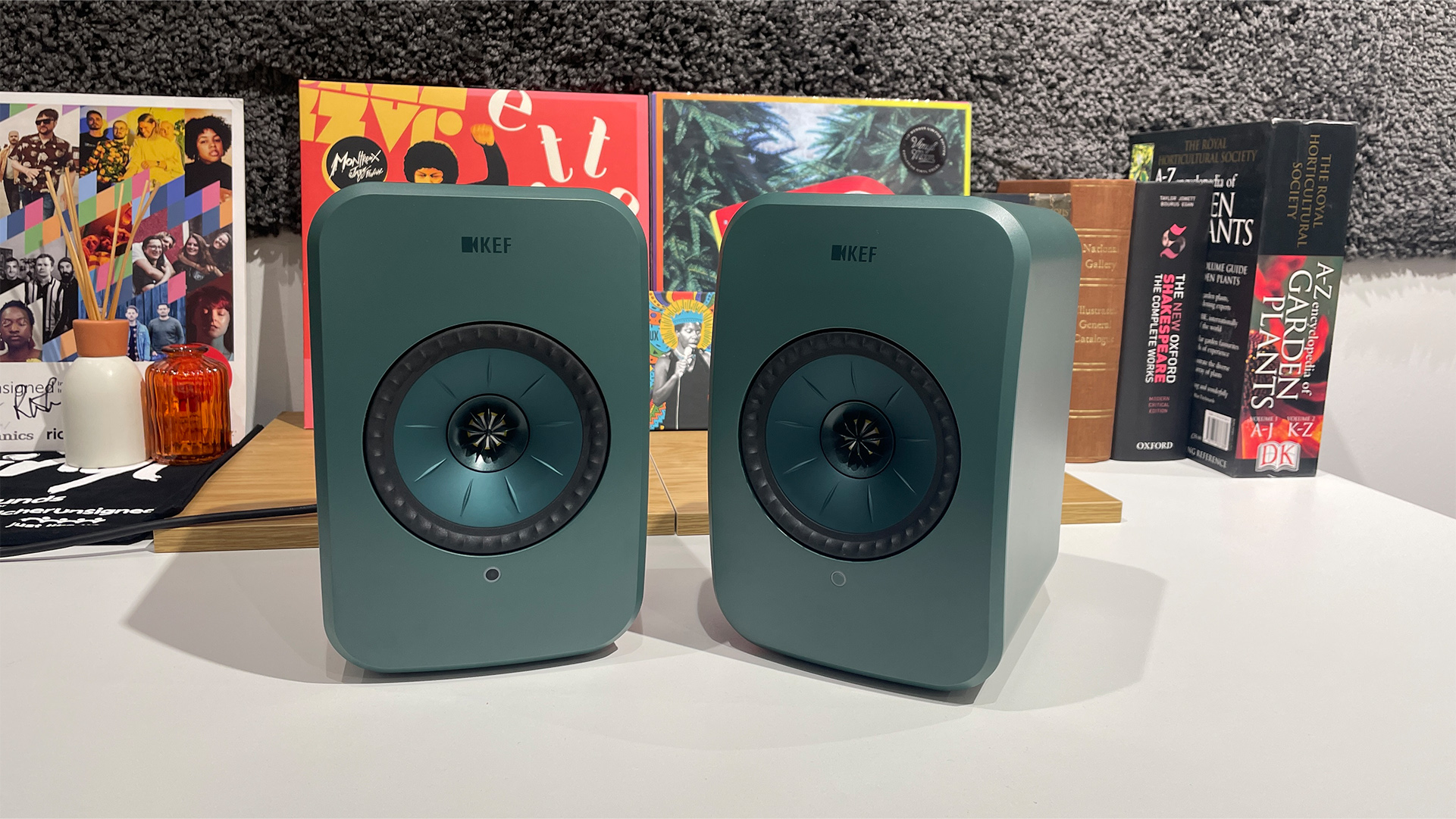
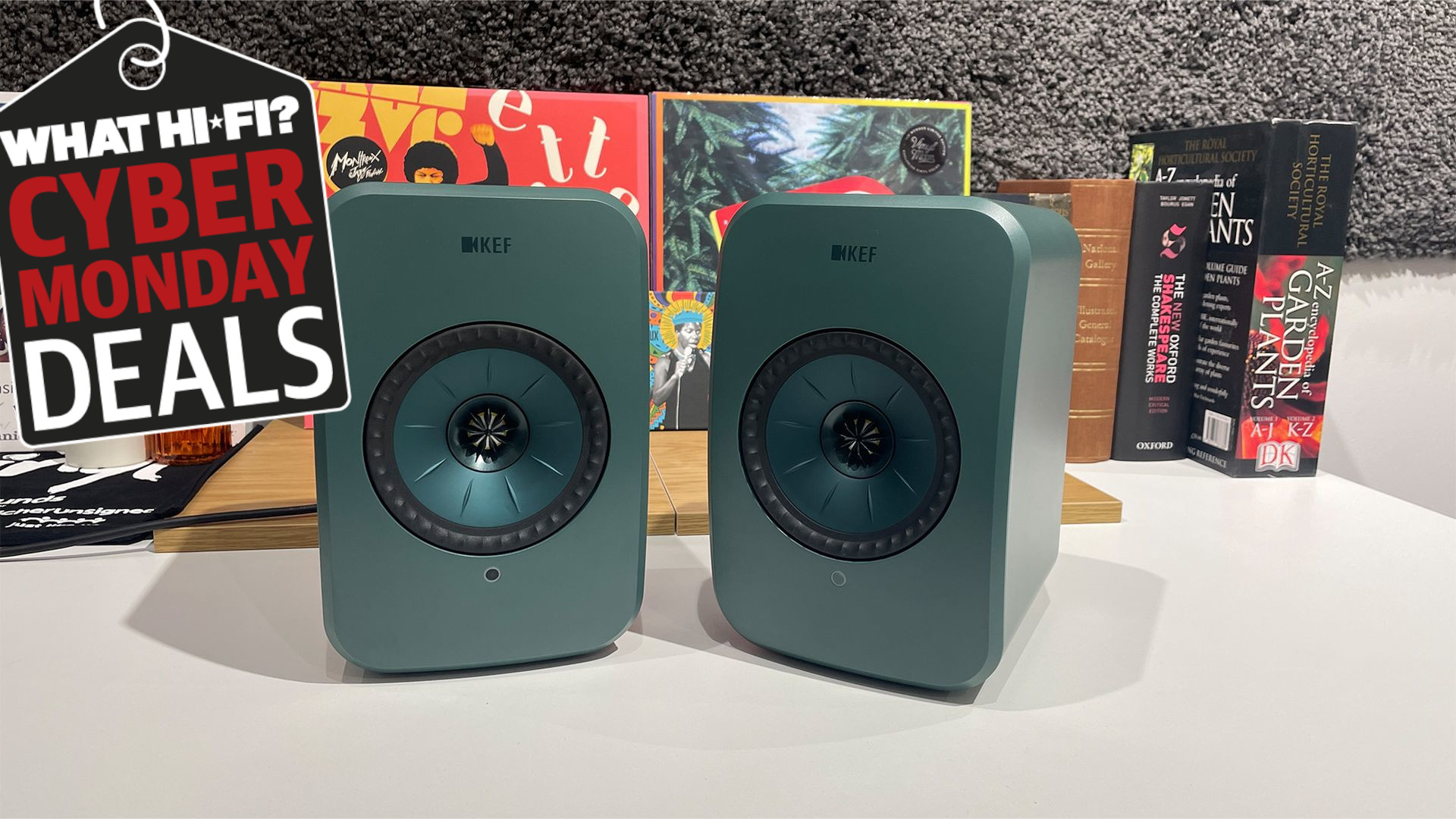
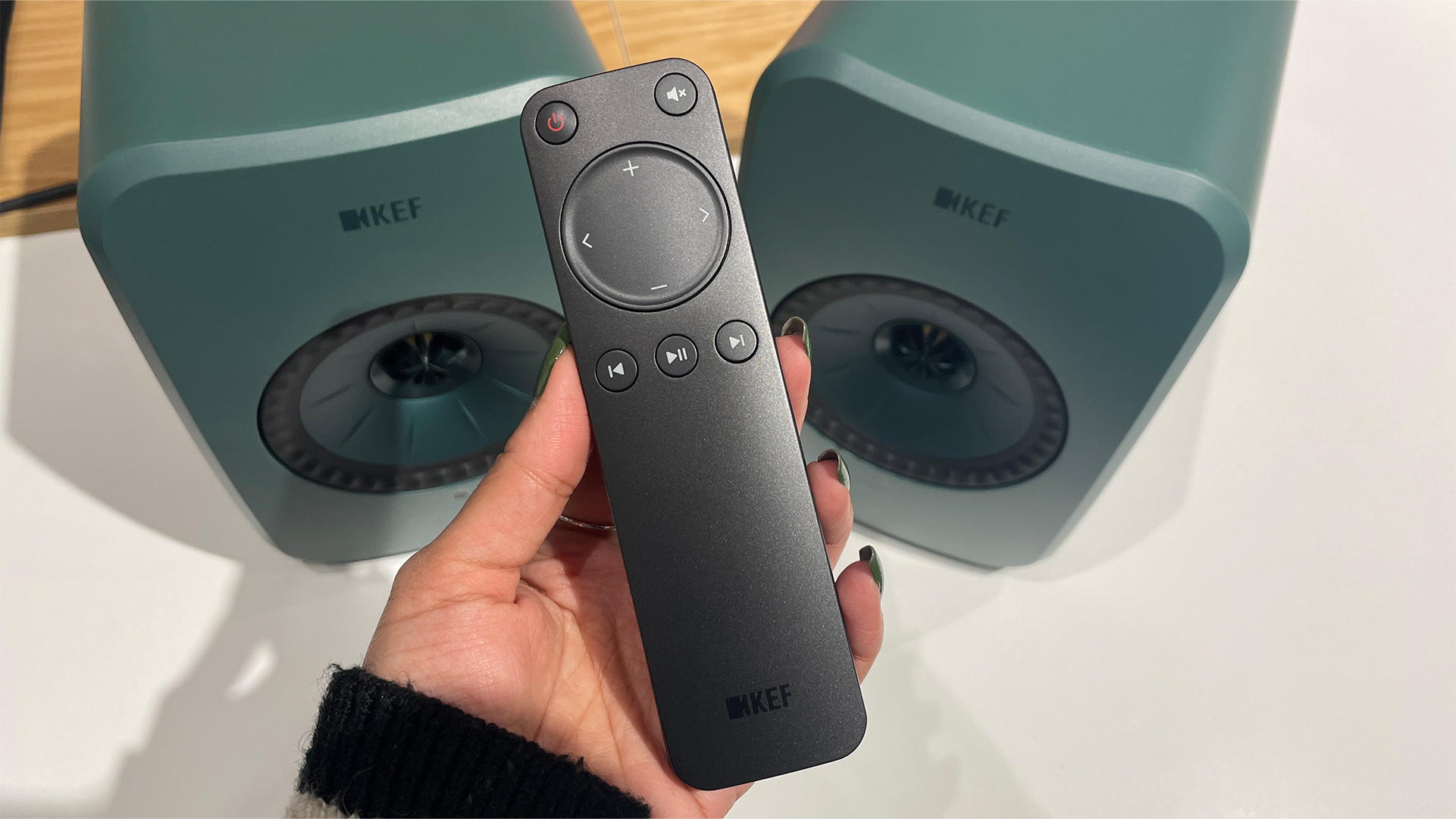
Specifications
Reasons to buy
Reasons to avoid
The KEF LSX II LT is, without question, one of the finest wireless speaker systems you can buy today. A slimmed-down but hardly bare-bones version of the original KEF LSX II, we were worried that the LT would have lost a sonic step, despite its maker's insistence that nothing had really changed internally for this cheaper LT twist.
KEF wasn't lying. The Award-winning stereo speaker system delivers so much of what has made the KEF LSX II a two-time What Hi-Fi? Award winner in its own right, firing out the same musical, detailed sound "with almost no sonic shortcomings when the two are directly compared side-by-side". It's so good, in fact, that it ousted the original version to become a What Hi-Fi? Award winner.
The LSX II LT makes the standard LSX II even more accessible by bringing the price down without cutting many corners. In 2023, the LSX II won the What Hi-Fi? Award as the 'Best speaker system' at its level, but the LT version is now the better value of the two.
It simply drops the option of a wireless link between the speakers, the aux input and a few colourway options, while lopping £300 / $400 / AU$500 off the price, and that to our minds is a better deal.
By taking a great system and streamlining it without compromising the sound, KEF has nailed it. If you're looking for a stereo speaker system that's a cinch to use and a pleasure to listen to, here's where you have to start.
Read our full KEF LSX II LT review
Best premium wireless speaker
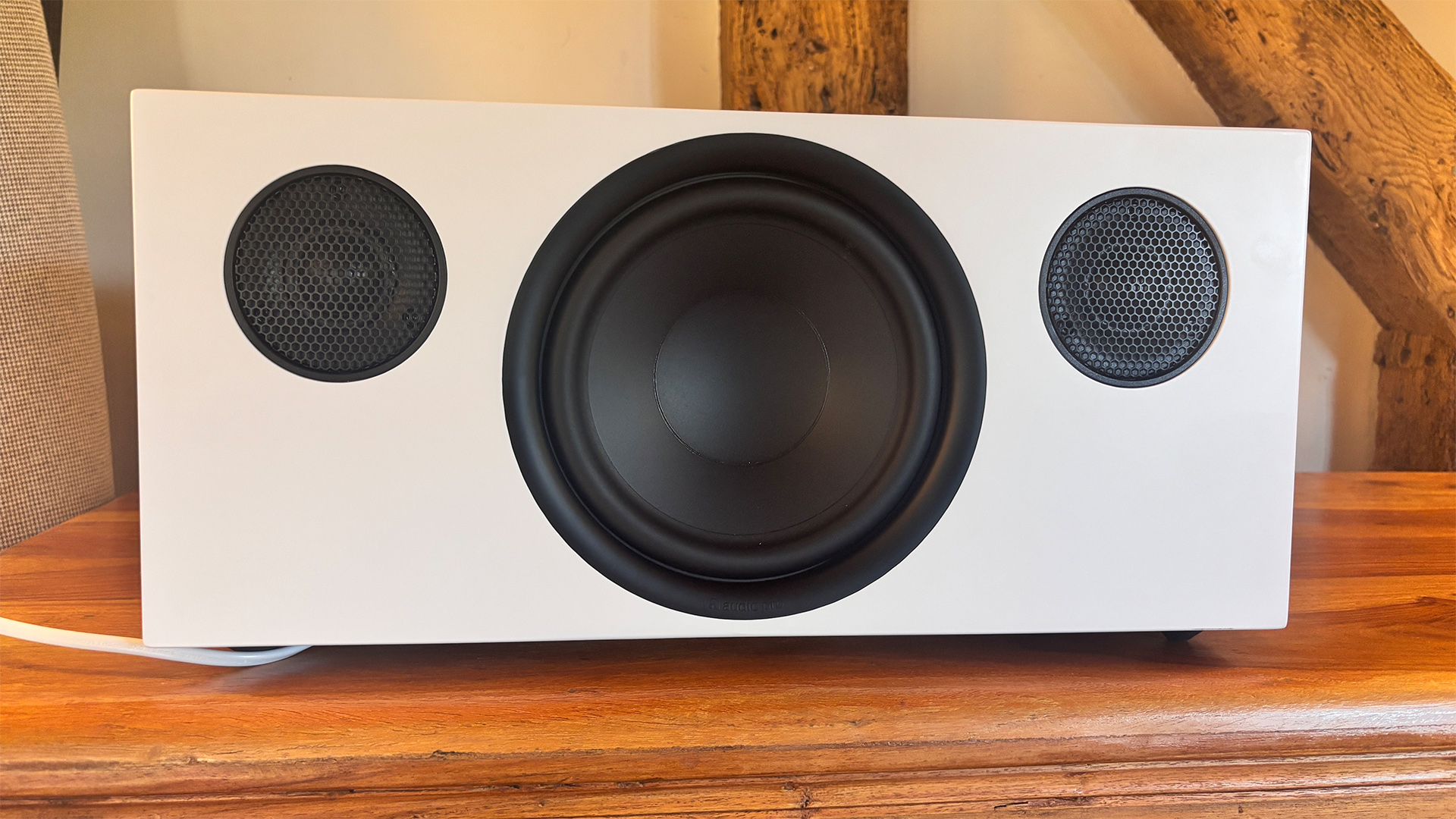

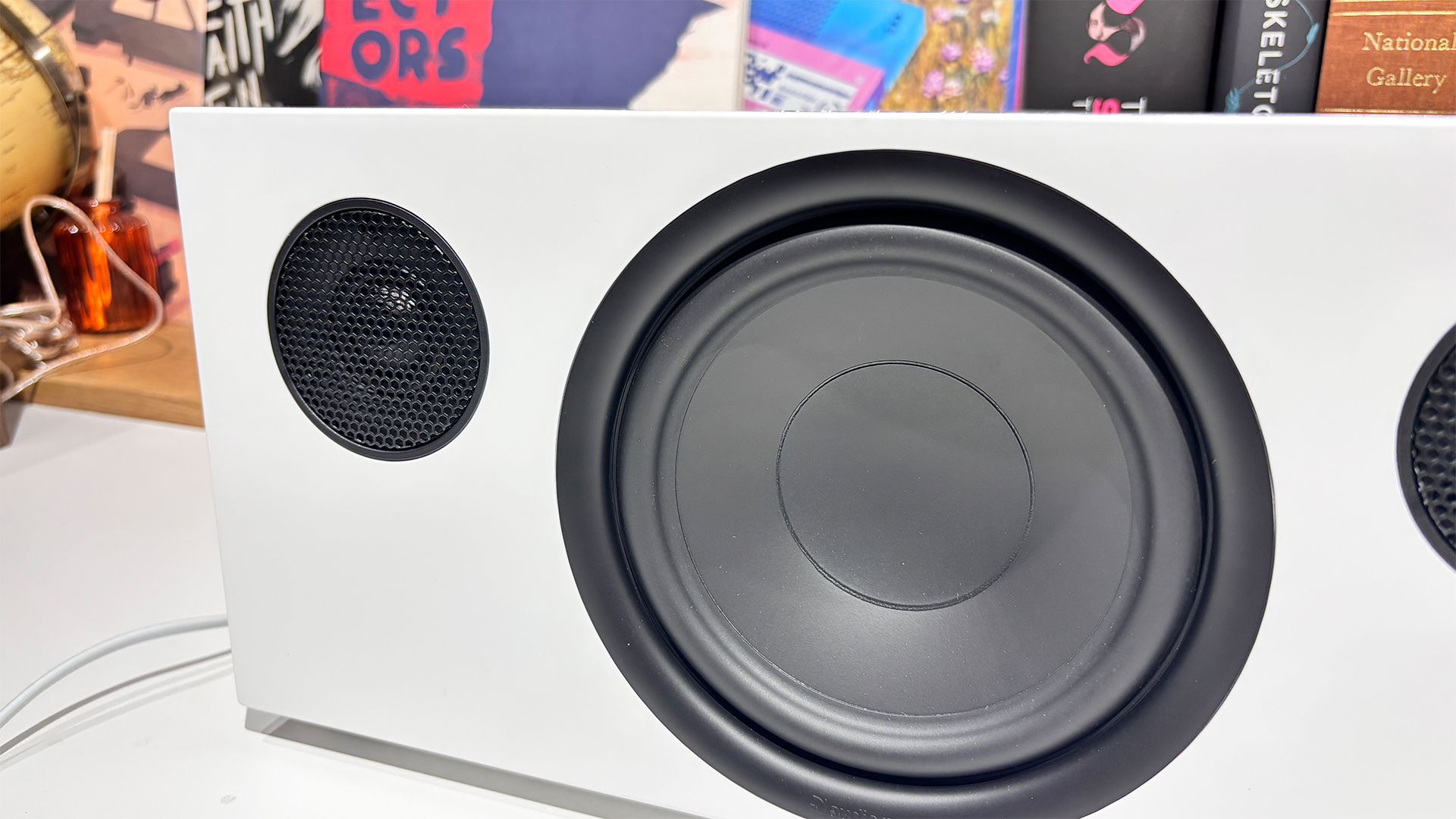
Specifications
Reasons to buy
Reasons to avoid
The Audio Pro C20 W acts as the replacement to the established, Award-winning C20, and while it doesn't look much different in person or on paper, subtle tweaks have raised a very fine speaker to new heights.
The big addition is the inclusion of a new app powered by LinkPlay, the company that owns WiiM. WiiM has built a reputation for its user-friendly nature, and we find the new app for the C20 W (dubbed the 'Audio Pro W' app) to be a comprehensive, manageable suite for getting the most out of your wireless speaker.
The sound has been tweaked, too. It's not a massive departure, but the 'W' edition brings extra helpings of clarity and detail to a speaker that was hardly lacking in such departments. It's also a little fuller in the bass, while its built-in phono stage is a step up over the one found in the original C20.
Elsewhere, things are broadly the same, and that's no bad thing. The Audio Pro C20 W remains primarily a wireless speaker, with its wi-fi capabilities allowing it to stream tracks up to 24-bit/96kHz via AirPlay 2 and Google Cast, as well as through Spotify Connect, Tidal Connect and Audio Pro multi-room.
You also get a raft of physical connections. The C20 W offers a batch of RCA inputs alongside HDMI ARC for boosting your TV's sound, plus a sub out if you're keen to add a subwoofer.
There's an optical input for hooking up to digital sources, as well as a better-sounding MM phono stage if you plan on connecting up your turntable and building an impromptu deck-and-speaker hi-fi system.
Our review verdict sums it up nicely: "The excellent C20 W sees Audio Pro honing an already Award-winning recipe. In retaining the versatility of the original while adding boosts to usability and sonic performance, Audio Pro has elevated a great wireless speaker to new heights". Sold!
Read our full Audio Pro C20 W review
Also Consider
Bowers & Wilkins Zeppelin Pro Edition: As a super streaming speaker with the looks to match, the Pro Edition is a B&W Zeppelin at its best. Its broad, expansive sound makes it a five-star winner, and that's before we even start on what a lovely thing it actually is.
JBL Authentics 300: Large, good-looking and very versatile, the Authentics 300 is a great choice for anyone who wants a semi-portable wireless speaker that can be moved from room to room where, once settled, it will fire out a robust, enthusiastic sound with confidence and spirit. With dual voice assistants, Bluetooth, wi-fi streaming and Alexa Multiroom, the 300 is far more than a pretty face.
KEF LSX II: if you just can't live without having a wireless link between the speakers, an aux input and/or some more premium finish options, the standard KEF LSX II should be your choice over the cheaper LT iteration above.
JBL Authentics 500: If you want to go the whole hog and really lean into the whole retro revival aesthetic, the big, bold and striking Authentics 500 is the logical step up from the 300 model. It packs everything you get with the smaller unit (albeit with no carry handle or battery), but this time you're granted spatial audio and a bigger, bolder sound. Crank it up!
Sonos Move 2: More the kind of speaker you'd take to the bottom of the garden rather than much further afield, the Move 2 is a solid, semi-portable alternative to the contenders listed above, made attractive by its extensive list of streaming features, seamless compatibility with other Sonos products and clear, agile sonic profile.
Wireless speakers coming soon
We're expecting a raft of wireless speakers to arrive in 2025 and 2026. Some brands have been forthcoming about their plans, others have teased new releases, whereas others have kept their cards close to their chest. Below, we've listed what we know, or can confidentially predict, will arrive this year.
Apple HomePod Mini 2
Well, we think a Mini 2 is on the way. We thought it would arrive at Apple's recent showcase in September, but a sequel never materialised, leaving us to suspect that 2026 will be the likely due date.
The new model is set incorporate Apple's own combined Wi-Fi and Bluetooth chip supporting Wi-Fi 6E, a significant upgrade for the established HomePod Mini which uses the older Wi-Fi 4 standard.
Read our Apple HomePod Mini news story
Apple HomePod with a screen
We're calling this the 'HomePod with a screen' partly because that's its supposedly distinguishing feature and partly because we don't know if the new model will even officially be called the HomePod 3 / HomePod (third generation).
It might act as the replacement for both the Mini and the mainline pods and become its own distinct entity, but our guess would be the new unit will oust the second-gen mainline incumbent and keep a space reserved for a new Mini 3.
Read our Apple HomePod with a screen rumours page
Harmon Kardon Enchant Speaker
Harmon Kardon's new Enchant series consists of two Dolby Atmos soundbars, a wireless subwoofer and the wireless Enchant Speaker, all of which are built to work as a family to form a wire-free surround sound package.
With AirPlay, Chromecast, Spotify Connect, Tidal Connect and Bluetooth all on the menu, the Enchant can also stand alone as its own feature-packed entity.
Read our Harmon Kardon Enchant Speaker news story
How to choose a wireless speaker
Figure out your use case
Once you've figured out a budget, you'll need to consider a few parameters. When choosing a wireless speaker, think about where you'll be using it and what you actually want from it. Will a small speaker for a second room be enough, or do you want a larger model that can fill a bigger space or act as your primary sound system? Do you want voice control? If you want portability from your wireless speaker, you might want to choose something with a built-in rechargeable battery.
Connections are king
Wireless speakers mostly include Bluetooth for basic streaming, but many can be connected to your home wi-fi network so you can utilise features such as AirPlay, Spotify Connect, Tidal Connect and any multi-room bonuses they might have. Many wireless speakers also come with a dedicated control app so you can control all their tricks and features via your smartphone/tablet.
One box or multiple?
Wireless speakers can come in one-box units (Audio Pro, Naim) or as active stereo speakers with sources and amplification built-in (see the KEF LSX II).
Make a list
Once you've decided what you're looking for, draw up a list of candidates. To help with that, we've got you covered with a great selection of wireless speakers across different price points.
How we test wireless speakers
While we have state-of-the-art testing facilities in Reading and London, where our team of experienced, in-house reviewers test the majority of hi-fi and AV kit that pass through our door, wireless speakers can be taken to a variety of locations to see how they perform across a range of environments and settings.
The most important thing to remember when testing a wireless speaker is sound, so that remains the starting point whenever anything passes through our doors. How a speaker sounds comes first, and it usually goes a long way in deciding whether we award a given rating.
What Hi-Fi? is all about comparative testing, so each product we review is compared to the best in its price and style class, and we keep current What Hi-Fi? Award winners and plenty of five-star products across every product category we review in our stockroom so that we can always easily compare new products to rival ones we know.
We also use a varied music selection when testing our products, ensuring that we're not simply repeating the same tracks or genres and instead aiming for a wide selection of pieces that will test all of the various facets of a product's performance. If you want to see the kind of tracks that are conducive to testing, check out our ultimate test tracks hub guide.
That said, wireless speakers do a lot more than just play music, and they're getting smarter with each passing year.
How a speaker integrates things like spatial audio is important if it's been advertised as a key feature, while connectivity options and a variety of streaming platforms (AirPlay, Chromecast etc.) are also taken into account. Apps and ease of use are important, too, with Sonos currently setting the benchmark in that particular area.
Build quality is certainly considered, as is an item's aesthetic qualities - it's no good sounding sublime if you turn the stomachs of everyone in the living room every time they pass by.
All wireless speakers are tested and reviewed in the context of their value on a performance-per-dollar basis, and as part of our testing procedure, wireless speakers are compared against similarly priced class leaders to see how they perform and help us figure out an appropriate rating.
All review verdicts are agreed upon by the team rather than an individual reviewer to eliminate any personal preference and to make sure we're being as thorough as possible. There's no input from PR companies or our sales team when it comes to the verdict, with What Hi-Fi? proud of having delivered honest, unbiased reviews for decades.
You can read more about how we test and review products on What Hi-Fi? here.
FAQ
What's the difference between Bluetooth and wireless speakers?
Wireless speakers use wi-fi to connect to an audio source, with various streaming protocols such as Apple AirPlay, Google Chromecast, UPnP, Spotify Connect/Tidal Connect allowing you to transmit music wirelessly over the connected network (or internet).
Bluetooth-only speakers use the short-range, low-bandwidth Bluetooth protocol, and while many speakers support both types of streaming methods, they don't necessarily have to have both.
Bluetooth-only speakers can't use wi-fi, while you can't use Bluetooth on a wireless speaker that doesn't have wi-fi built in. There are advantages to wi-fi: it doesn't have as limited a signal range as Bluetooth, is capable of transmitting higher-quality audio (up to 24-bit hi-res) and has more flexible methods of streaming.
Bluetooth is more limited and is a lossy transmission of audio, but it doesn't need a wi-fi connection to connect to, and can be more affordable and portable as it doesn't require being tethered to a mains or home network connection.
Are JBL and Bose good brands?
At What Hi-Fi?, we've reviewed many products from both JBL and Bose over the years, and we've liked products from both brands.
While Bose speakers are often stylish, have lots of features and have ruled the roost in years past, JBL's current run of Bluetooth and wireless speakers has been impressing us with their features list, enjoyable sound quality and better value for money.
However, while JBL is very dominant when it comes to affordable Bluetooth speakers, you'll see from the list above that wireless speakers from other brands, such as Sonos, Apple or Audio Pro, deliver even better streaming features, build quality and audio performance when it comes to buying a wireless speaker – although they tend to be admittedly more expensive.
Why is Sonos so popular?
Sonos' big claim to fame is popularising multi-room audio, i.e. being able to play music across your entire house across multiple speakers instead of in a single room with a single speaker.
Of course, Sonos wasn't the first company to do this, but Sonos did manage to design stylish, performant, feature-rich wireless speakers that were never too tough to set up, bringing high-quality multi-room audio to the masses.
The seamless way it handles the connection between these multiple speakers and the well-organised and easy-to-use Sonos app is also a huge part of its popularity.
Now, the company offers a variety of products from smart speakers to soundbars, many of which we've found to offer strong sound performances and good value. Various Sonos products have also won multiple What Hi-Fi? Awards from us in recent years, so you know it's a firm recommendation of quality overall.
Sonos products also support a huge range of popular music streaming services and various source devices that are easy to play from. All of this, together, adds up to why Sonos is still so popular.
Recent updates
- October 2025: The Audio Pro C20 W replaces the outgoing C20 as our best mid-price entry.
- September 2025: We've updated our copy to reflect upcoming speakers and recent news regarding the HomePod Mini.
- July 2025: No new entries but performed a top-to-toe check-up.
- May 2025: No new additions but made sure all of our copy is accurate and up-to-date.
- March 2025: Added the Bowers & Wilkins Zeppelin Pro Edition to our also consider section.
- January 2025: Added a 'coming soon' section and updated our copy for 2025.
- December 2024: Replaced KEF LSX II with KEF LSX II LT and moved the former to our also consider section.
- October 2024: What Hi-Fi? Award winners labelled after the 2024 announcements.
- August 2024: Expanded upon how we use music and test tracks in our 'How we test' section.
- July 2024: Added JBL Authentics 300 and JBL Authentics 500 to our 'Also Consider' section.
- April 2024: Added Audio Pro C20 wireless speaker following its five-star review
- February 2024: Added FAQ section to help with buying decisions and frequently asked questions.
- November 2023: What Hi-Fi? Award winners labelled after the 2023 Awards Best Buys and Product of the Year announcements.
MORE:
Best wireless headphones: Bluetooth headphones for every budget
Want more portable fun? Our best Bluetooth speakers will see you right
Planning on a pool party? These are the best outdoor speakers
The latest hi-fi, home cinema and tech news, reviews, buying advice and deals, direct to your inbox.

Harry McKerrell is a senior staff writer at What Hi-Fi?. During his time at the publication, he has written countless news stories alongside features, advice and reviews of products ranging from floorstanding speakers and music streamers to over-ear headphones, wireless earbuds and portable DACs. He has covered launches from hi-fi and consumer tech brands, and major industry events including IFA, High End Munich and, of course, the Bristol Hi-Fi Show. When not at work he can be found playing hockey, practising the piano or trying to pet strangers' dogs.
